Creating a great product is no longer enough. How you introduce it to the market can significantly impact its success.
Unique and innovative product launch ideas are now essential to brand strategy.
Here’s why:
- Your business must stand out to attract potential customers in a saturated market. Creative product launches generate buzz. And showcase your product’s unique value proposition effectively.
- The best product launch ideas enhance brand visibility. You can share your brand’s story, values, and unique identity. This can attract new customers and foster loyalty among existing ones.
- Innovative product launches create urgency and excitement, driving initial sales. They can also generate media coverage, referrals, and social media engagement. Contributing to increased market share and sustained business growth.
Here are 15 creative marketing ideas for launching your new product:
1. Influencer Partnerships
Partnering with influencers helps you reach their audiences and gain the audience’s trust.
Many influencers have a sizable and/or engaged following. Some of them are also great at content creation. This helps them showcase products in a unique and appealing way. And connect with their followers.
This can help you reach a broader audience through collaboration.
Now, you might wonder how to find an influencer whose audience overlaps with your target audience.
Using a specialized tool like Influencer Analytics can be highly effective in finding the right people to work with.
It helps you search for influencers by channel or keyword. And view their metrics.
Here’s how you can use it to find the right influencers for your needs:
Let’s say you run an Instagram account and would like to find creators and celebrities to promote your products.
Start by going to “Influencer Discovery” and selecting “Instagram.”
Click “Filters” in the top-right corner.
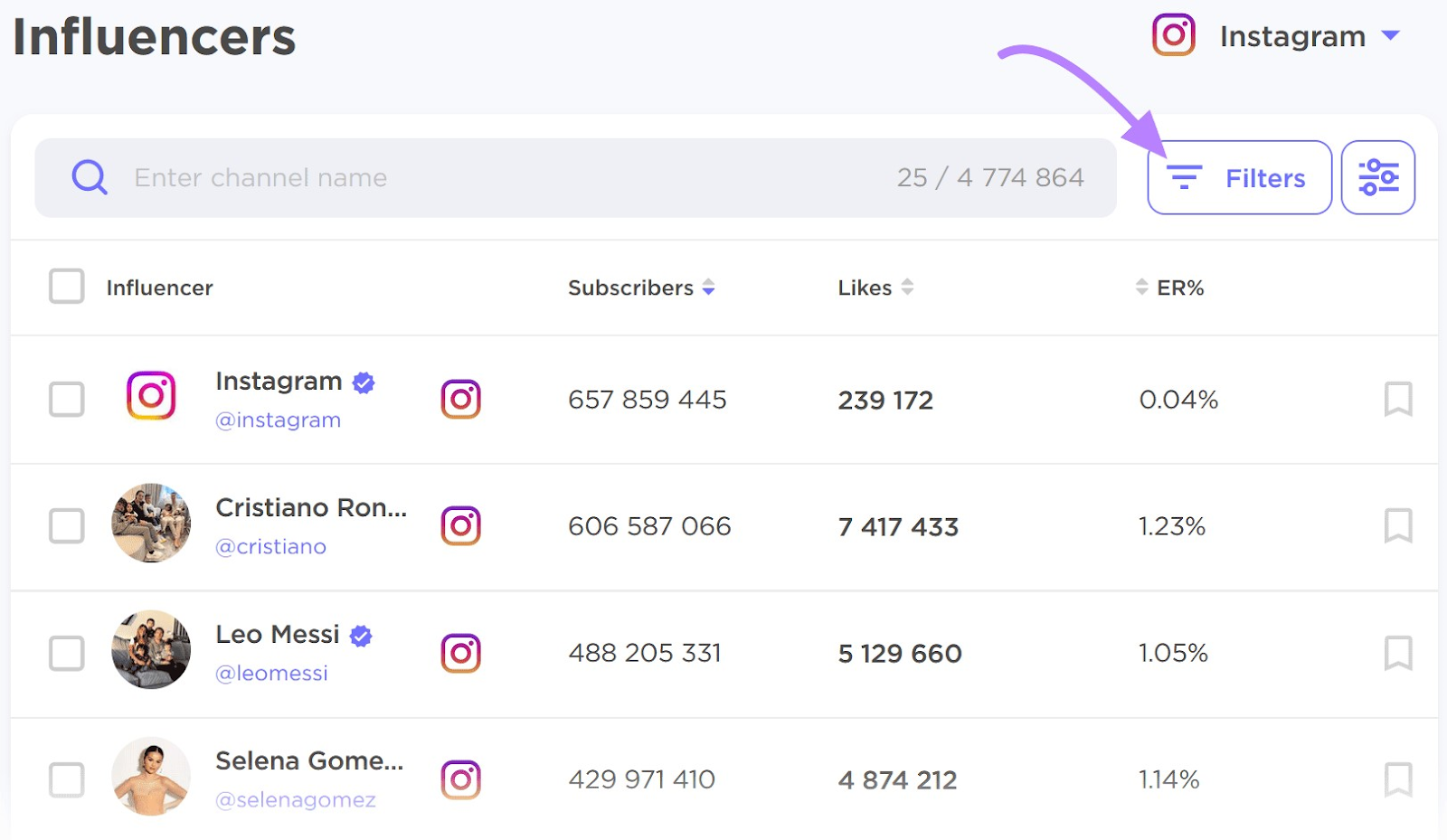
Then set your preferences for subscriber count, category, pricing, engagement rate, etc.
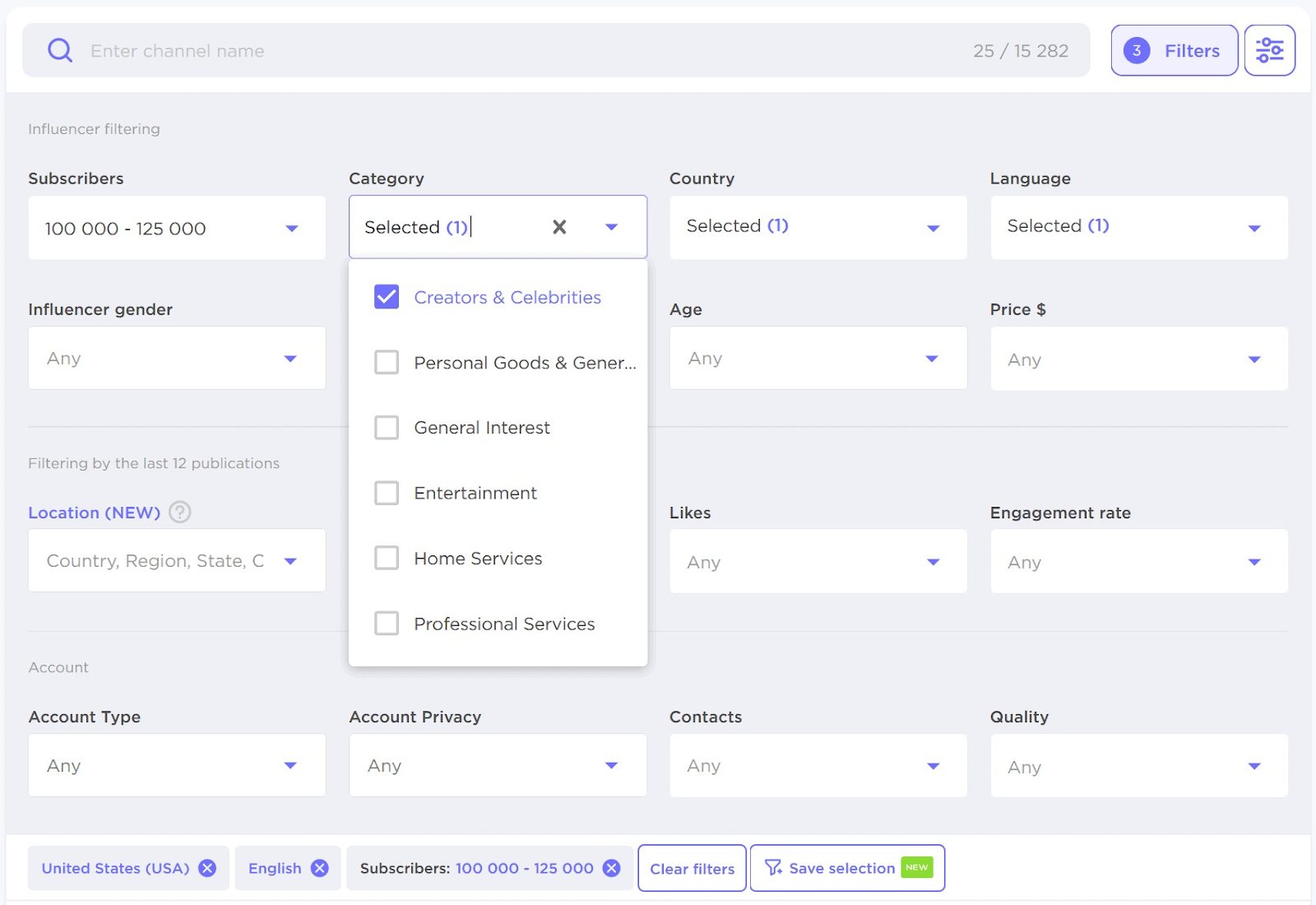
You’ll see a list of results based on your criteria.
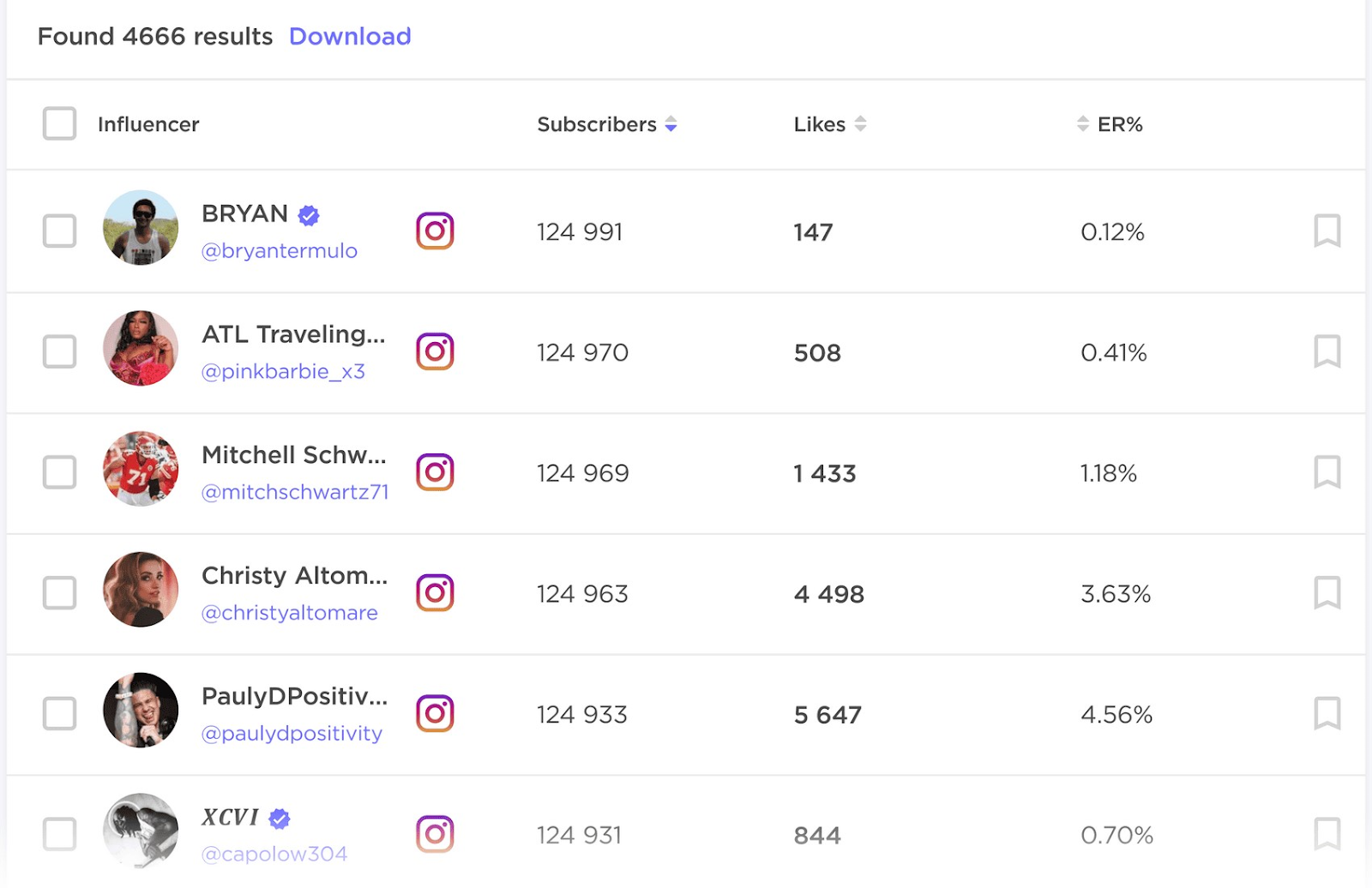
You can click on each influencer’s profile to access more data and contact information.
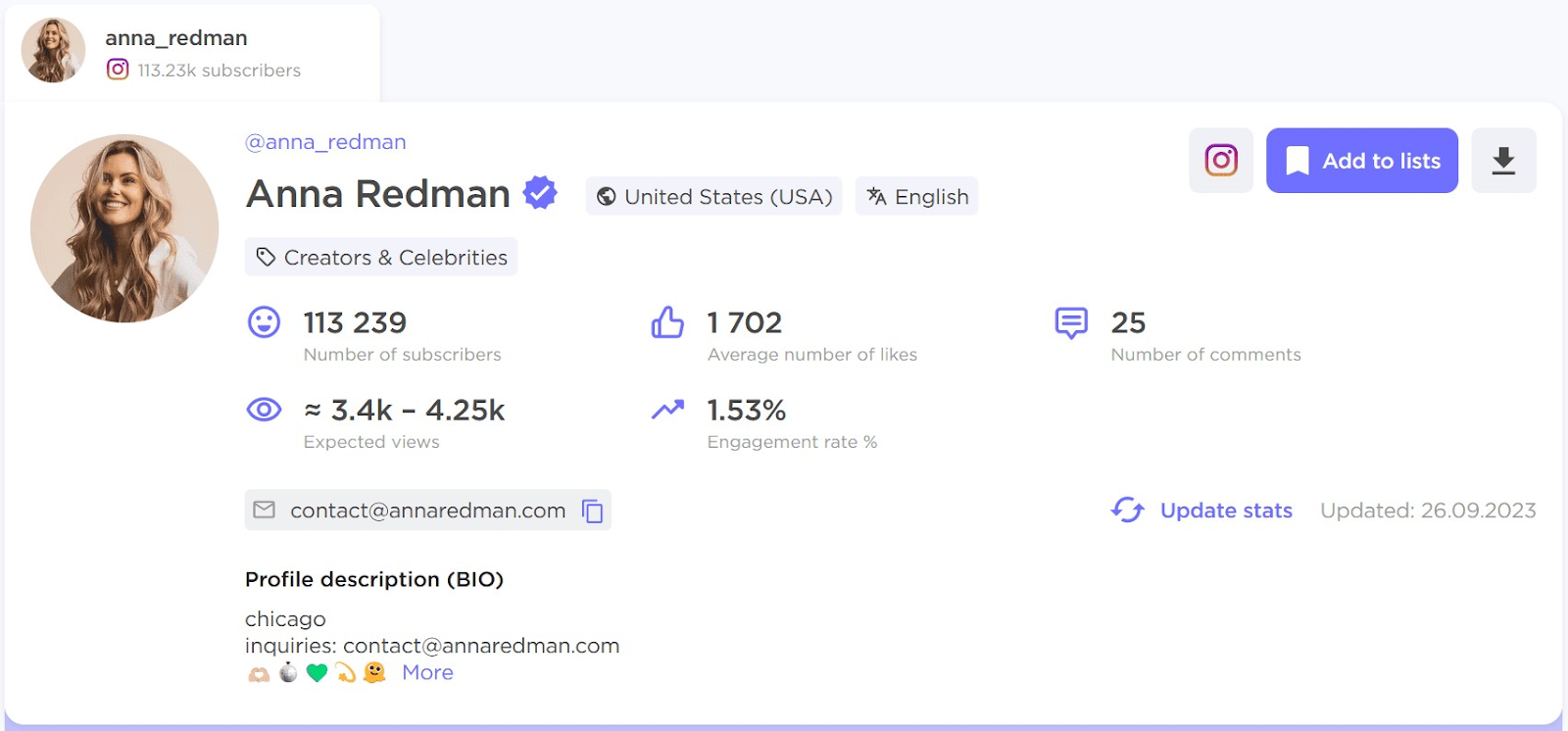
Example: Daniel Wellington’s Influencer Marketing Strategy
Daniel Wellington achieved a global presence and boosted sales through successful influencer collaborations.
Wellington executed a brilliant strategy by focusing on Instagram (micro-)influencers. They provided influencers with free watches and unique discount codes to share with their followers, creating authentic content and promoting the brand.
The use of Wellington’s handle or hashtag in every post increased brand visibility.
The strategy generated buzz, drove traffic, boosted sales, and increased customer engagement and brand loyalty through user-generated content.
2. Launch Events
A launch event is a strategic and carefully orchestrated occasion that introduces a new product or service to the market.
It allows you to showcase your product in a controlled and curated environment. And it’s a prime chance to connect with customers, partners, influencers, and the press personally and interactively. This can generate buzz, media coverage, and boost brand awareness. And engaging directly with the audience can provide instant feedback.
Plus, all the excitement around the event can lead to immediate sales and pre-orders.
But how can you create a successful launch event?
You can invite journalists and bloggers to cover the event. Give them a press kit that includes high-quality images, product information, and key messages about your brand.
Another option is to use social media to amplify your event. This could include live-streaming the event, creating a unique hashtag, or running a contest tied to the event.
Example: Slack’s Launch Event
Slack took a unique approach to its launch event strategy. Instead of a one-time event, they chose to do it in phases over a few months. Starting with a private beta release (or “limited preview release” as they called it).
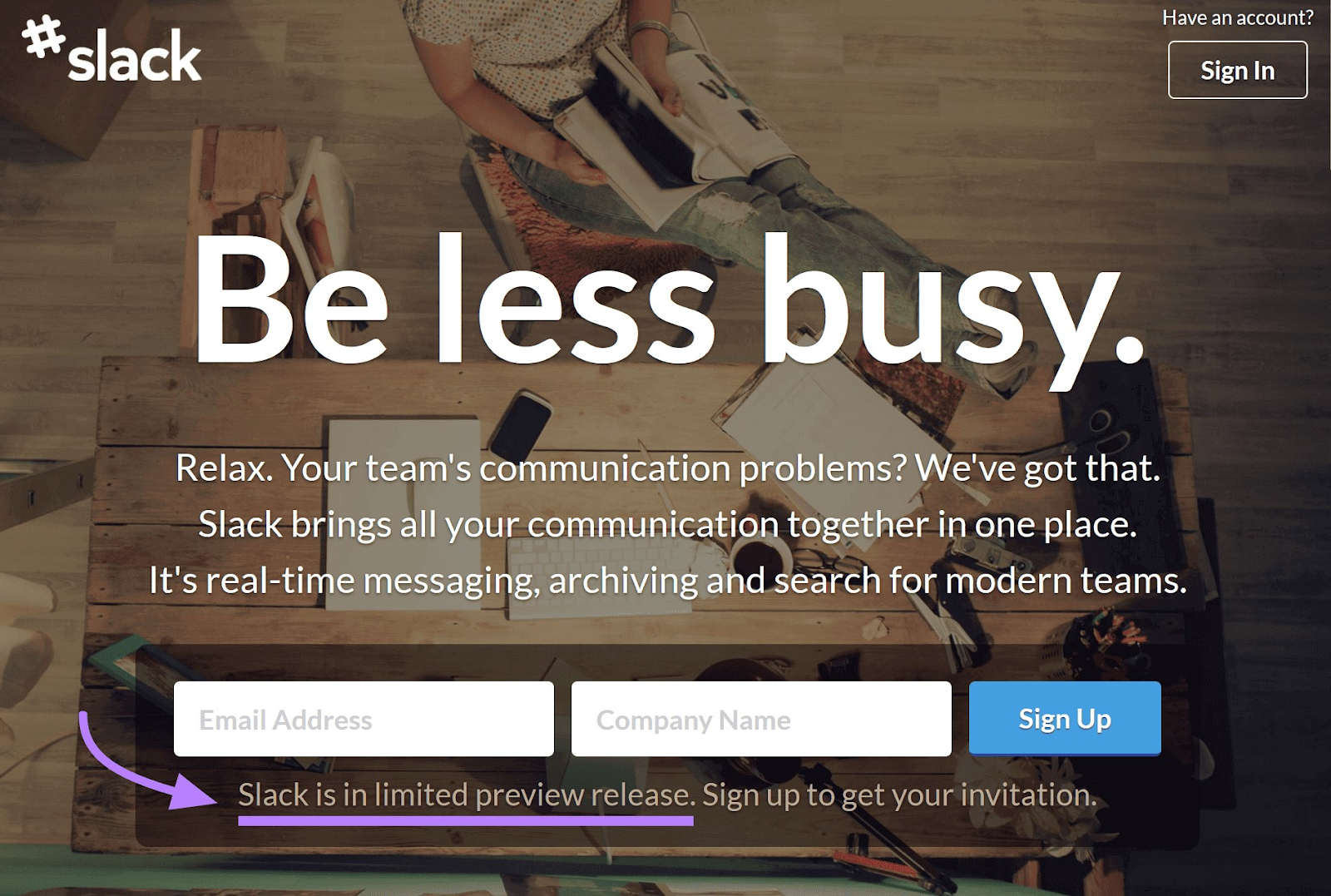
This allowed for iterative improvements and built a strong user community.
When the public launch came, Slack had enthusiastic supporters. And established a strong market presence, leading to significant growth.
Social media contests are online competitions on platforms like Facebook, Instagram, and X (formerly Twitter).
They can take various forms. Including photo or video contests, giveaways, caption contests, or quizzes. Participants usually engage by liking, sharing, commenting, or submitting user-generated content. With a chance to win prizes.
Social media contests offer a key advantage: exponential reach. Participants engaging with your content by sharing, commenting, or interacting expose your brand to their network. This ripple effect amplifies your brand’s visibility and recognition.
Here are a few tips to keep in mind when running social media contests:
- Select appropriate platforms for the contest. It should depend on the type of contest and audience demographics.
- Leverage unique social media features. For example, Instagram Stories are great for running short-term contests or giveaways.
- Create rules and regulations that are clear and concise
- Familiarize yourself with the rules of the platform
Also, you can use Semrush’s Social Poster tool to schedule your posts.
And analyze metrics in Social Analytics to track audience growth, engagement, and reach.
Let’s say your contest goal is to track the engagement rate on your contest-related posts.
First, select in Social Analytics the social media platform you want to track. (It works with Facebook, Instagram, and LinkedIn.)
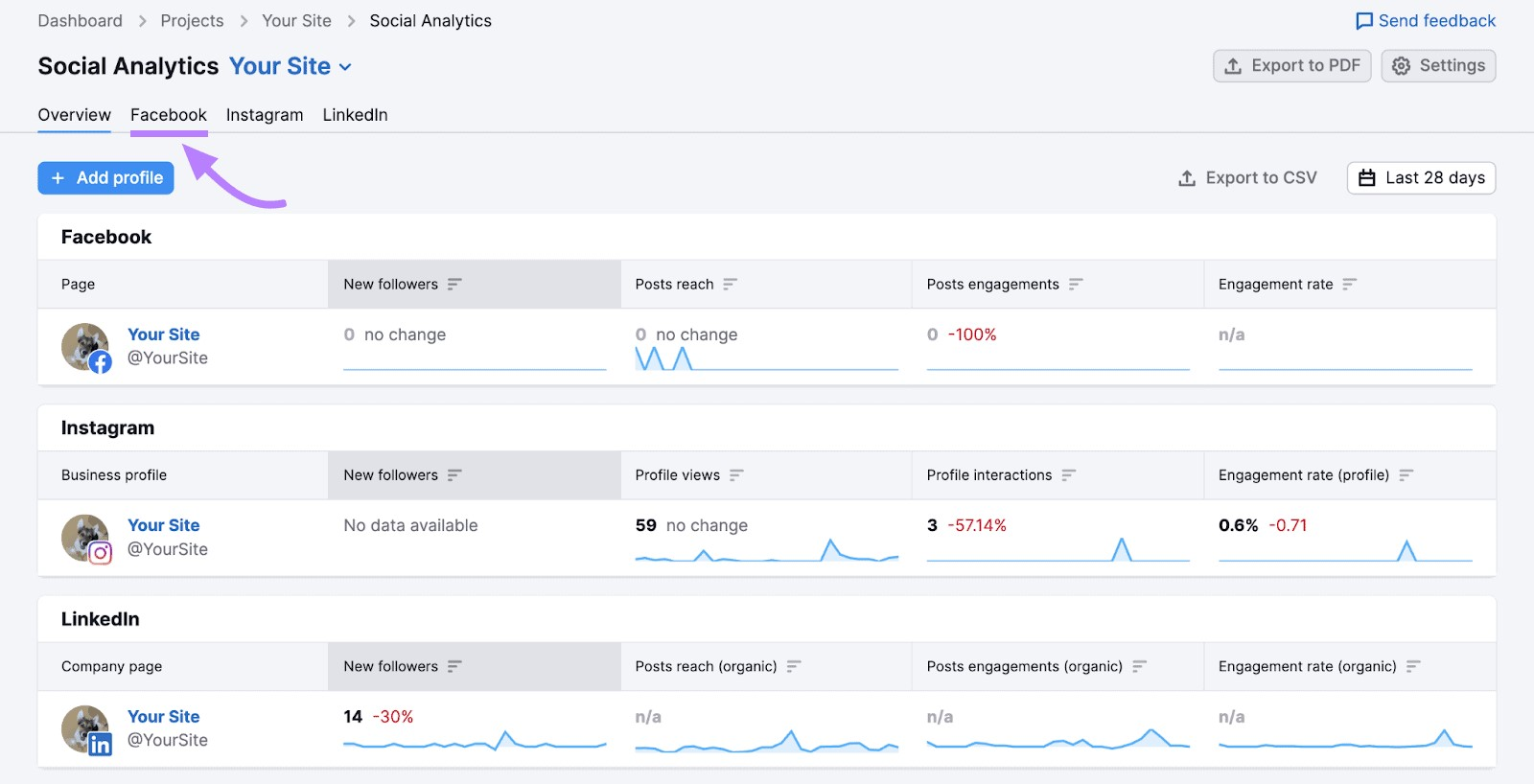
Click on “Posts” below and select the content **** range.
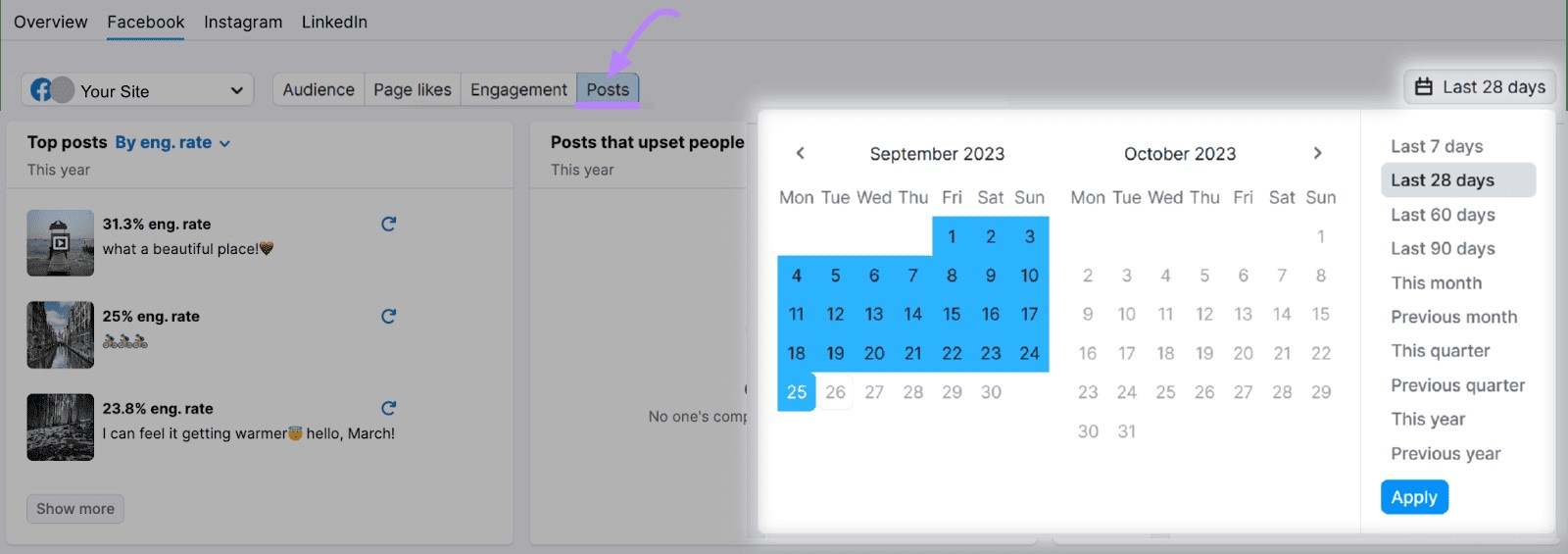
After that, you can compare the engagement rate on your posts.
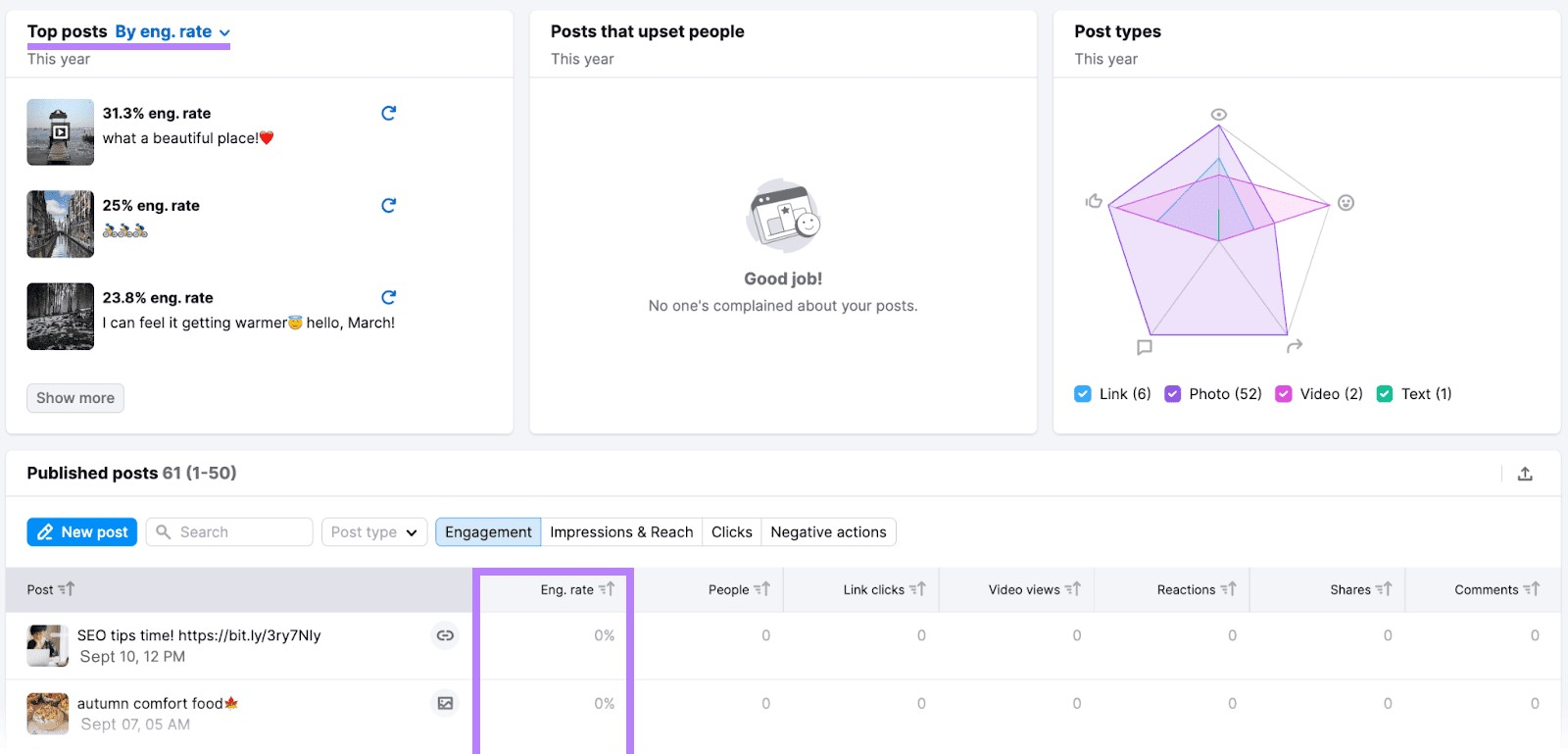
Example: GoPro’s Photo Contests
GoPro often has photo contests where users submit shots taken with GoPro cameras. And the winning photos get featured on GoPro’s social media.
This strategy brings in loads of user-generated content and shows off the capabilities of GoPro’s products in real-life situations.
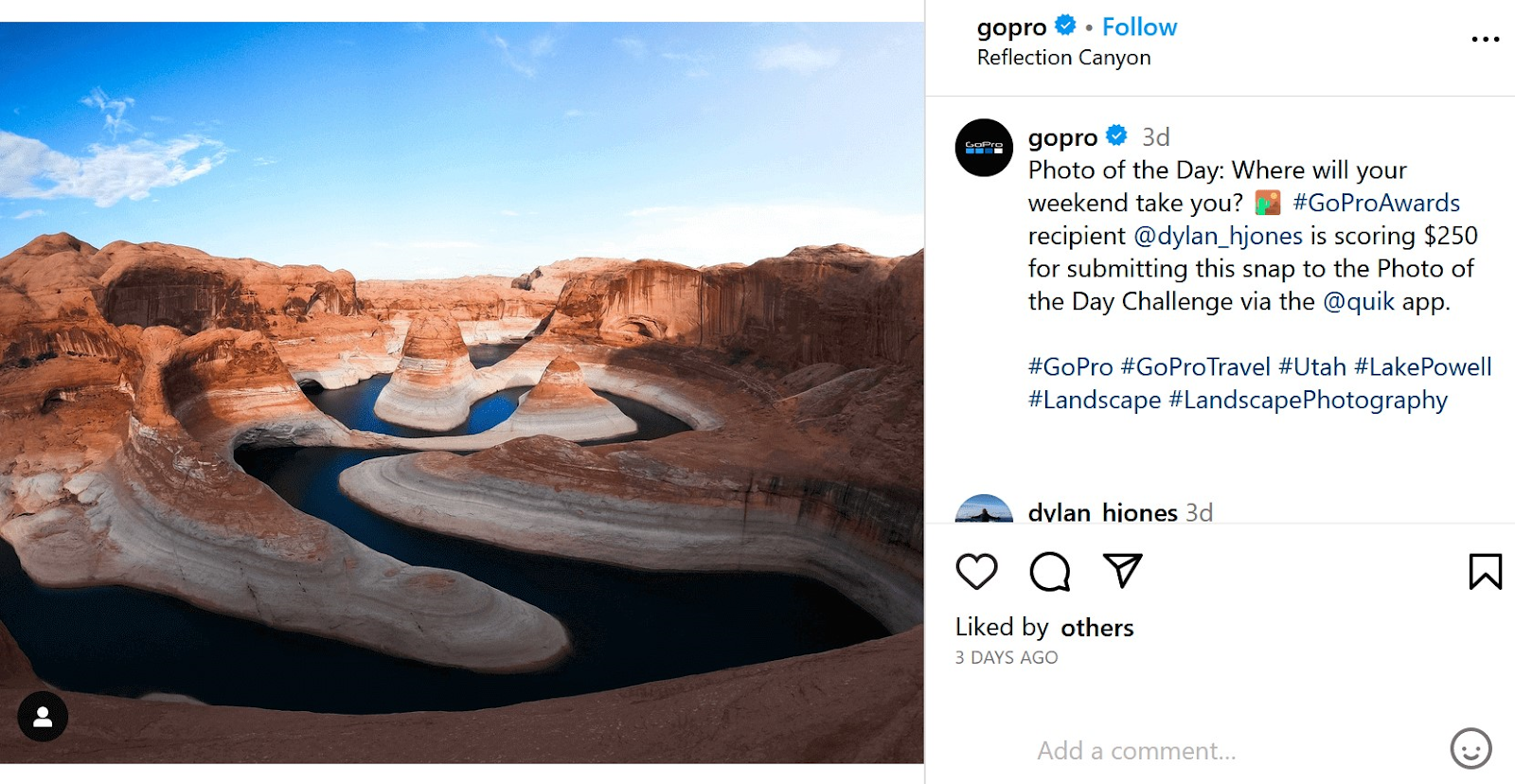
4. Referral Programs
Referral programs encourage customers to refer others by giving them rewards for spreading the word about your products.
Referrals tend to generate more qualified leads than other marketing channels since they come from a trusted source.
You can offer rewards in various forms, such as:
- Gifts
- Discounts
- Loyalty points
To maximize the success of a referral program, here are a few tips:
- Ensure an effortless referral process. For example, offer customers the choice to share via email, social media, or even text message.
- Offer incentives that are relevant and valuable to your customers
- Find creative ways to promote the program. You can create referral cards, run social media campaigns, or send newsletters with special offers.
Example: Dropbox’s Referral Program
Dropbox’s referral program is possibly one of the most famous cases of referral marketing.
It offers users additional storage space for each referred friend who signs up with Dropbox. And it also awards the referrer with additional storage for each successful referral.
This program played a key role in Dropbox’s user base growth.
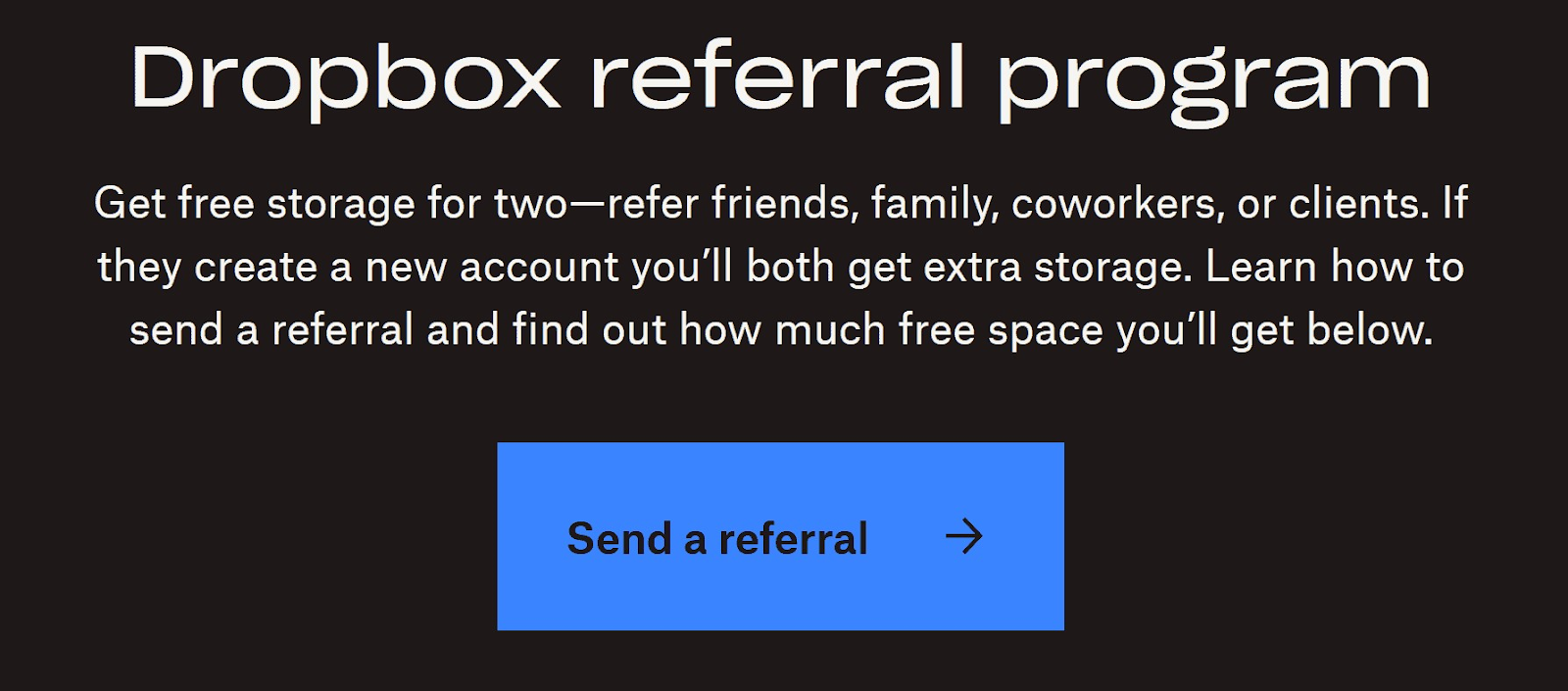
5. Pre-Sales and Pre-Orders
Pre-sales are early sales for products.
Pre-orders are advance reservations for products.
Both occur before their respective official release dates.
One of their key advantages is the potential to generate early buzz about your products and build anticipation.
It can increase customer loyalty by offering special perks or discounts before the official launch. And it also helps you gauge the interest level in your product.
You can use various channels to spread the word about pre-sales and pre-orders.
For example:
- Email campaigns
- Social media ads
- Influencer collaborations
To fuel interest in your product launches, here are a few tips:
- Create social media campaigns that spread the word about your upcoming product launch
- Offer perks to customers who pre-order, like exclusive discounts or early access
- Feature customer stories and share their experiences with the product
Example: Evernote’s Premium Subscription Pre-Sales
Evernote, a note-taking software, implemented a pre-sales strategy to convert free-tier users into paying customers for their premium subscription.
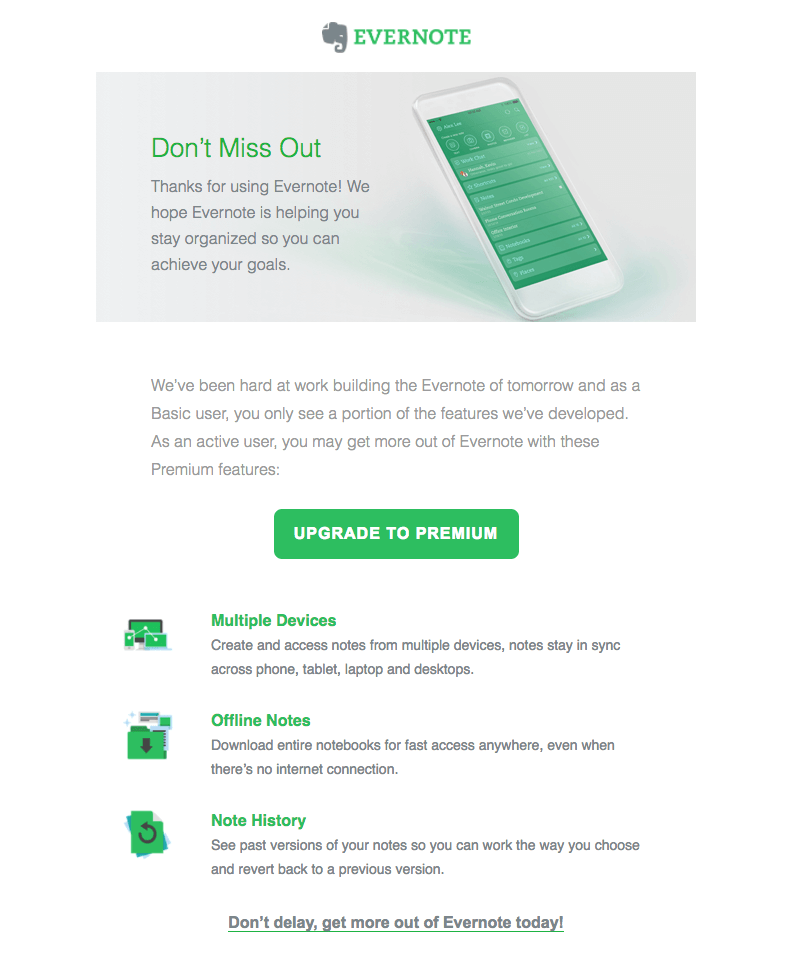
They sent emails highlighting the upcoming premium features and offering a discounted early sign-up price. This generated revenue and created excitement among its user base.
This strategy helped them validate the new premium features and boost the company’s revenue.
6. Sneak Previews
Sneak previews are brief clips or images. They provide a glimpse of the product before its official launch.
They’re a great way to build anticipation for upcoming products or services. Because these previews give customers an early peek into what you have in store. And keep them excited about the launch.
You can use the following channels to promote sneak previews:
- Emails
- Video marketing
- Social media posts
- Influencer collaborations
Here are a few tips to keep in mind when you use sneak previews:
- Showcase your product in its best light. You could create behind-the-scenes videos or a short demo video of the product.
- Highlight unique features and emphasize the benefits customers can gain from using them
- Keep the previews brief and to the point. Don’t reveal too much before the launch ****. This builds anticipation and sparks conversation.
Example: Mailchimp’s Sneak Previews
Mailchimp, a popular email marketing platform for small businesses, leverages sneak previews when launching new features or services.
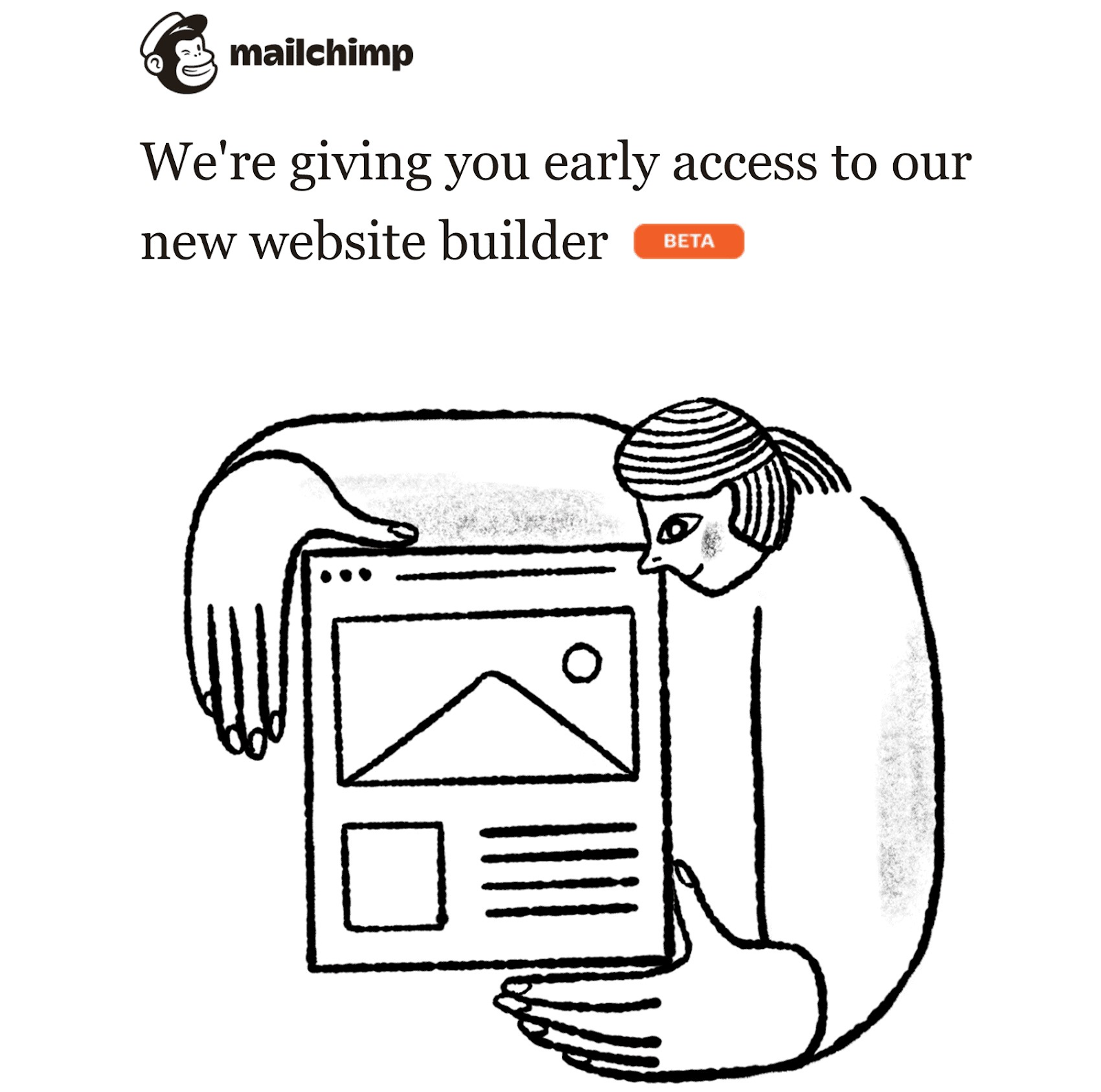
Before launching their website builder tool, Mailchimp released sneak previews to generate anticipation among users. They shared demo videos and screenshots of the new tool in action through various channels. Including social media posts, email newsletters, and in-app notifications for existing users.
This strategy created anticipation and familiarized users with the tool prior to its official launch.
7. Interactive Demos
Interactive demos offer customers a hands-on experience before launch.
You can use them to show features or functions. Providing users with a virtual tour of the product, highlighting its unique capabilities, and giving them the ability to explore it on their own.
These demos can be hosted on your website or through social media campaigns. You could also integrate them into your email newsletters and landing pages.
Here are a few tips for creating effective interactive demos:
- Focus on demonstrating the features that make your product stand out from the competition
- Keep it short and sweet. Too much detail can overwhelm customers.
- Focus on the benefits that users can gain from using the product
Example: Intercom’s Interactive Demos
Intercom effectively uses interactive demos to showcase their product’s capabilities during launches.
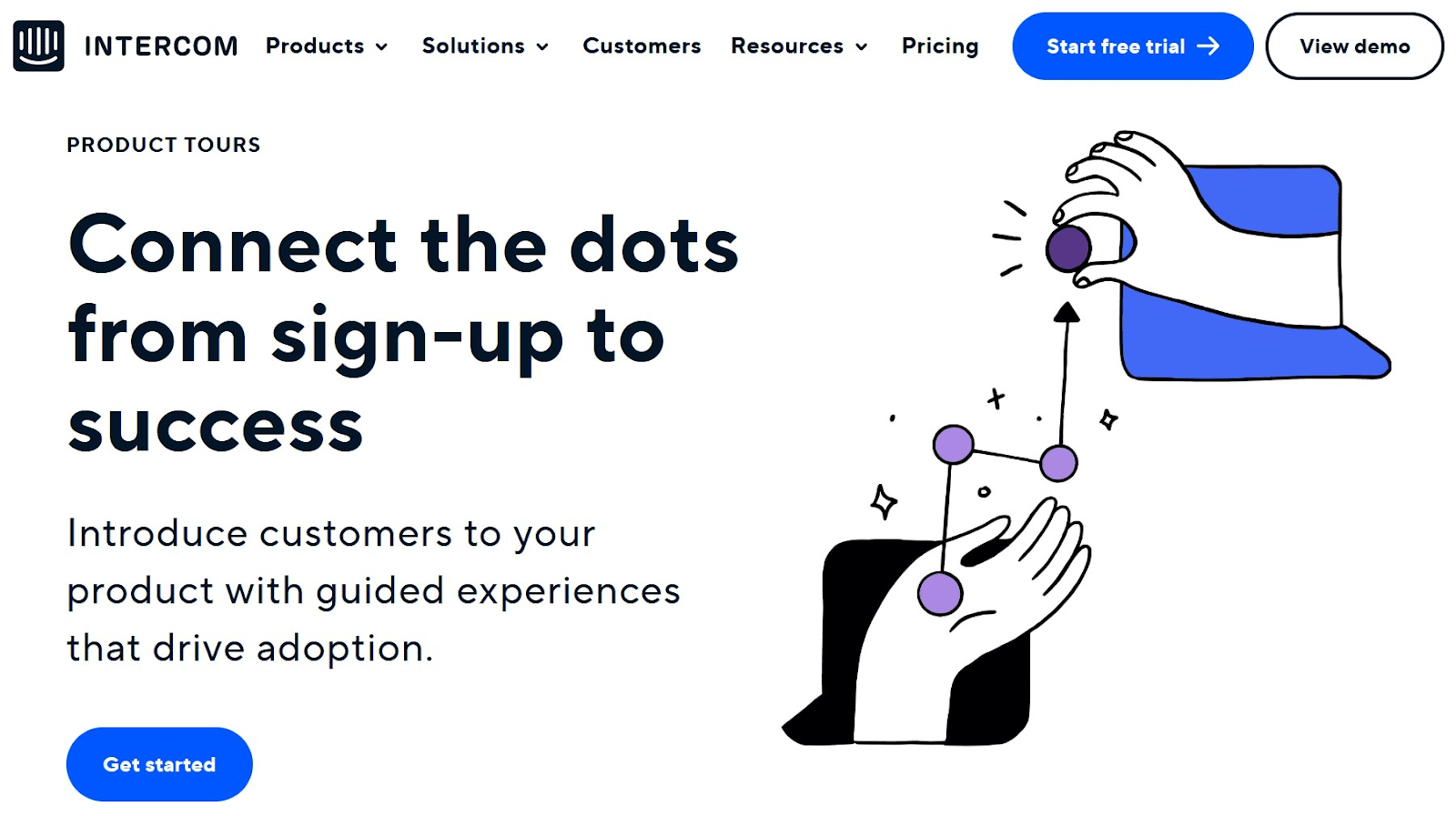
Intercom creates interactive demos to showcase new features and updates. Allowing customers to explore functionality firsthand. For instance, they released a demo for their “Product Tours” feature. Showcasing its ease of use and customization options.
This strategy increased user understanding and built anticipation for the launch.
8. Webinars
Webinars are online events. They educate, inform, or train attendees about a specific topic or product.
Webinars have the advantage of interactive engagement. Letting potential customers ask questions and get immediate responses. Live interactions can create personalized connections that can help customers understand and become more interested in the product.
Here are a few tips for hosting effective webinars:
- Invite industry experts and influencers to speak at the webinar. This will expand your audience and create an engaging experience for viewers.
- Engage with participants. Encourage open discussion and allow viewers to ask questions during the event.
- Promote your webinar on various platforms. This will help increase viewership and participation.
Example: ConvertKit’s Webinars
ConvertKit uses webinars to promote new features and updates.
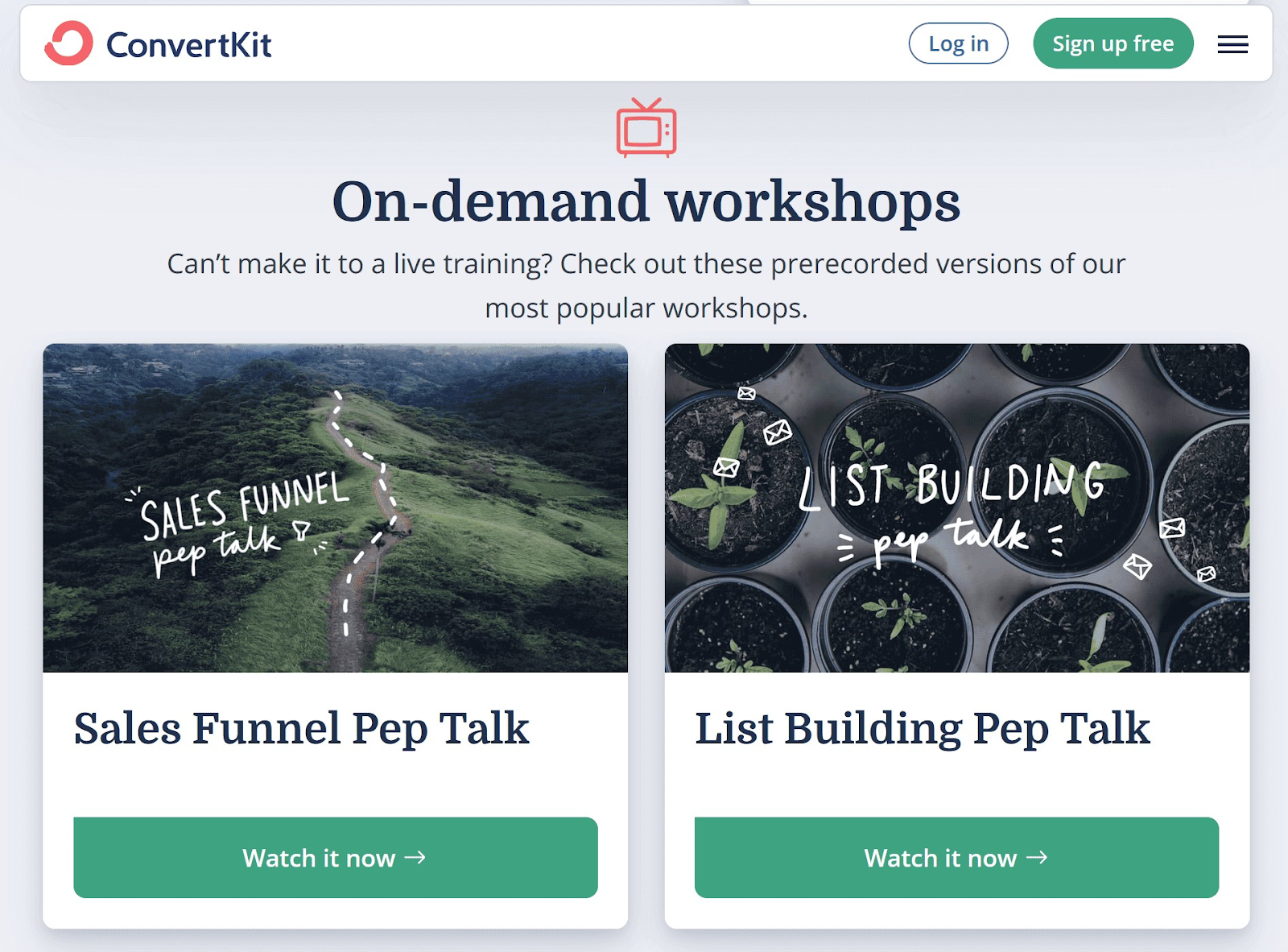
ConvertKit held a webinar to introduce their “Broadcast Segmentation” feature. With industry experts and influencers sharing its benefits, the webinar included a live product demo. Enabling viewers to explore new features and ask questions in real-time.
The event generated excitement for the launch and provided valuable insights to potential customers.
9. Partnership Marketing
In partnership marketing, you collaborate with other companies.
By leveraging partnership marketing, you can access your partner’s customer base and expand your reach.
And in a partnership, both parties contribute resources and efforts. Leveraging each other’s expertise, reputation, and marketing. This reduces the time, effort, and money needed to launch your product effectively.
Here are a few tips for successful partnership marketing:
- Ensure that the goals and objectives of both parties are aligned
- Choose partners with a relevant audience to ensure maximum impact
- Communicate clearly about the roles and responsibilities of each party
Example: GoPro and Red Bull’s Partnership
GoPro and Red Bull’s partnership illustrates successful brand collaboration.
They’ve launched products and created captivating action sports content by combining resources. This collaboration has boosted GoPro’s sales and expanded its reach in the extreme sports community. While Red Bull gained access to GoPro’s audience.
Overall, this partnership has yielded impressive results for both brands.
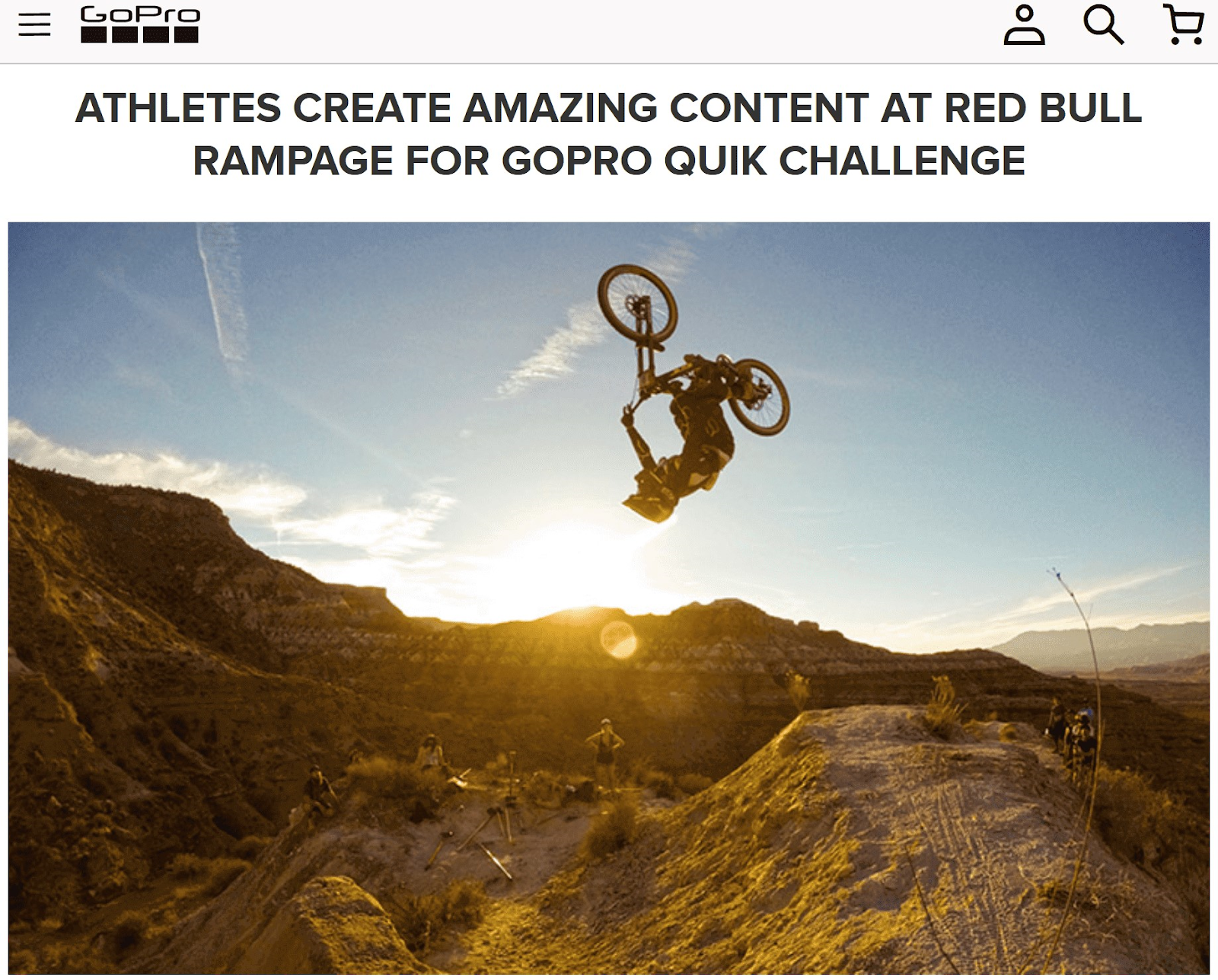
10. Product Hunt Launch
Product Hunt is a platform to discover new products. It lets you launch your product on a dedicated page.
When launching on Product Hunt, you can leverage its following of tech-savvy users and active community. This can give your product the attention it needs to get off the ground. And you can gather feedback from potential customers.
Here are a few tips for launching on Product Hunt:
- Highlight your product’s unique features and value proposition
- Include visuals to make your launch page more appealing
- Promote your Product Hunt launch across all your marketing channels
- After launching, engage with the Product Hunt community
Example: Notion’s Product Hunt Launch
Notion successfully used Product Hunt to launch their product.
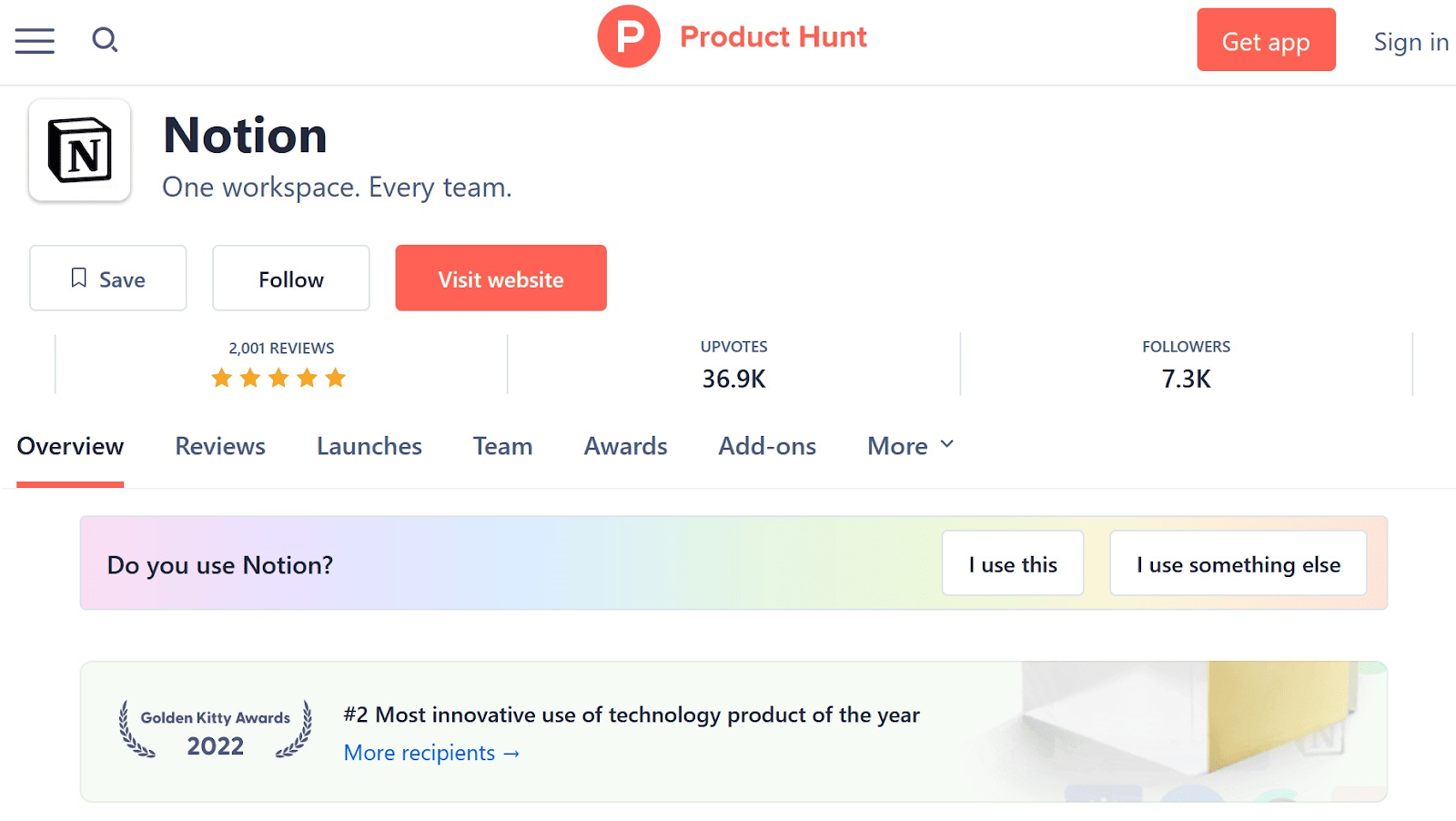
Notion showcased their versatile offering through use cases and templates. Attracting users with diverse needs.
Notion 2.0 launched with an impressive 8,600+ upvotes, claiming the top spot as the #1 Product of the Day, Week, and Month.
They’ve also built a network of loyal users. And valuable feedback, reviews, and referrals contributed to their growth.
11. Email Marketing Campaigns
You can reach potential customers with personalized messages in their inboxes with email marketing campaigns.
They’re beneficial for a product launch strategy in two significant ways:
- You can customize your message for different customer groups through segmentation
- You can track open rates, click-through rates, and conversions to measure campaign effectiveness and make necessary adjustments
Here are a few tips for launching an email marketing campaign:
- Create engaging content that highlights your product’s value and its benefits for customers
- Use split testing to optimize open rates and engagement
- Craft engaging subject lines that draw readers in
Example: Thrive Market’s Email Marketing Campaign
Thrive Market used email marketing in their product launch strategy.
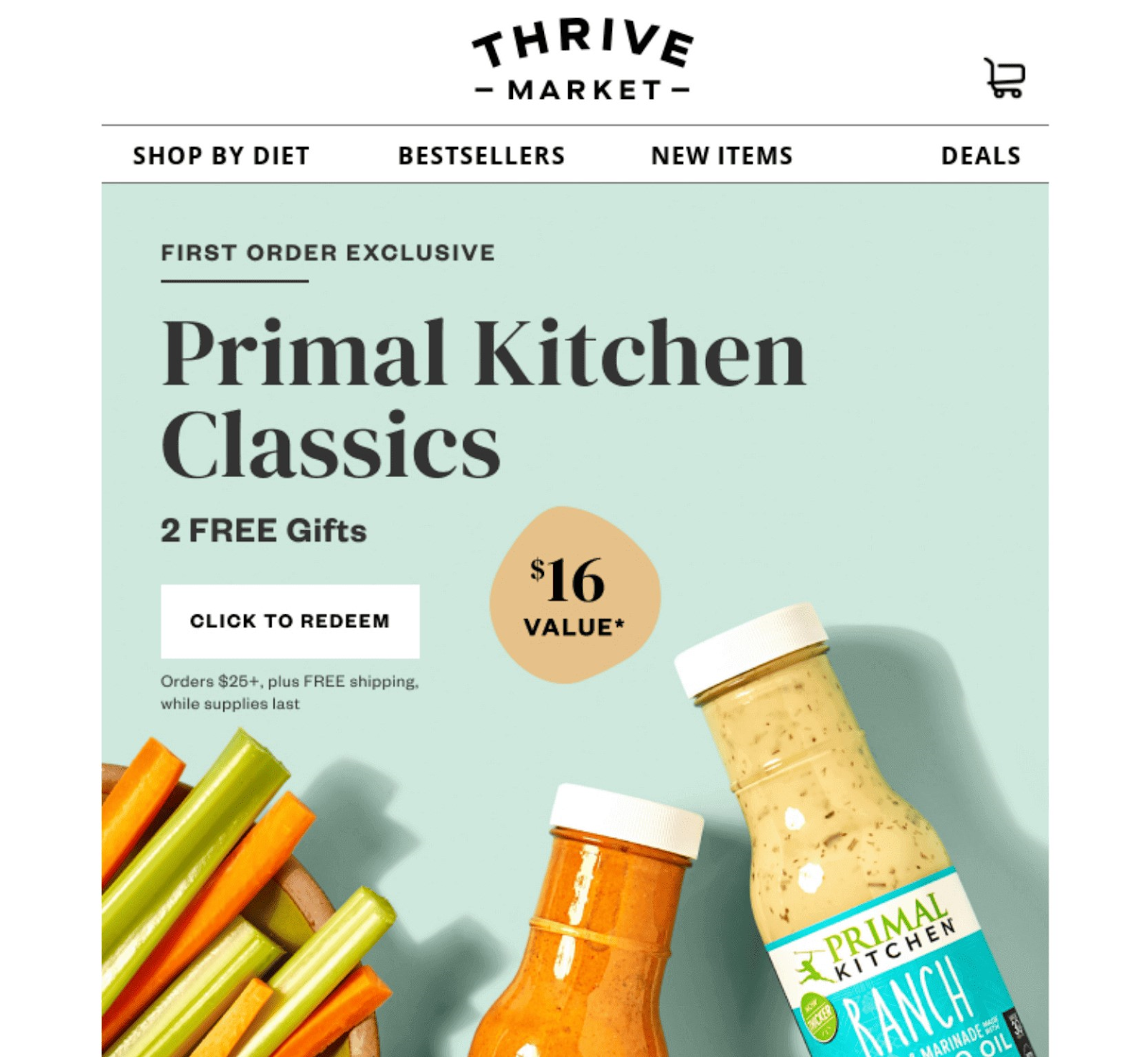
They engaged subscribers by building anticipation through a series of emails. Featuring sneak peeks and highlighting product features.
On launch day, they announced availability with a special discount offer and clear call-to-action buttons.
12. Customer Testimonials
Customer testimonials are feedback or reviews that showcase customers’ experiences with a product or service, highlighting its benefits.
Launching a new product can be challenging due to customer uncertainties. Especially when reviews aren’t available. However, collecting customer testimonials before the launch can build trust and confidence. And ease initial concerns.
These testimonials are a powerful marketing tool that can establish product credibility and customer trust. Even before the official launch.
Here are a few tips for using customer testimonials in your product launch strategy:
- Showcase powerful quotes from reviews to encourage conversions
- Include both audio and video testimonials to make them more engaging
- Feature real customers with relevant stories to relate to potential buyers
Example: Casper’s Customer Testimonials
Sleep product company Casper used customer testimonials during their product launch.
They featured real customers in their video campaigns. Highlighting the benefits of their mattresses and the positive experiences they had with them.
This social proof helped build trust among potential customers. And encouraged them to try out the mattresses.
The testimonials also helped create buzz around their product launch and generated plenty of publicity.
13. Unboxing Videos
Unboxing videos are content where people share their first impressions and reactions while unpacking a new product.
Unboxing videos are effective because they show potential customers what the product looks like in real life and its features. This helps them make an informed decision before purchasing. They also give customers an authentic experience. Letting them feel the excitement of opening the product for the first time.
Here are a few tips for using unboxing videos:
- Share videos on social media platforms to increase reach and engagement
- Feature influencers, celebrities, or media personalities to add credibility to the video
- Amplify user-generated videos to show real reactions and experiences with the product
Example: Dollar Shave Club’s Unboxing Videos
Dollar Shave Club leveraged unboxing videos to launch their product.
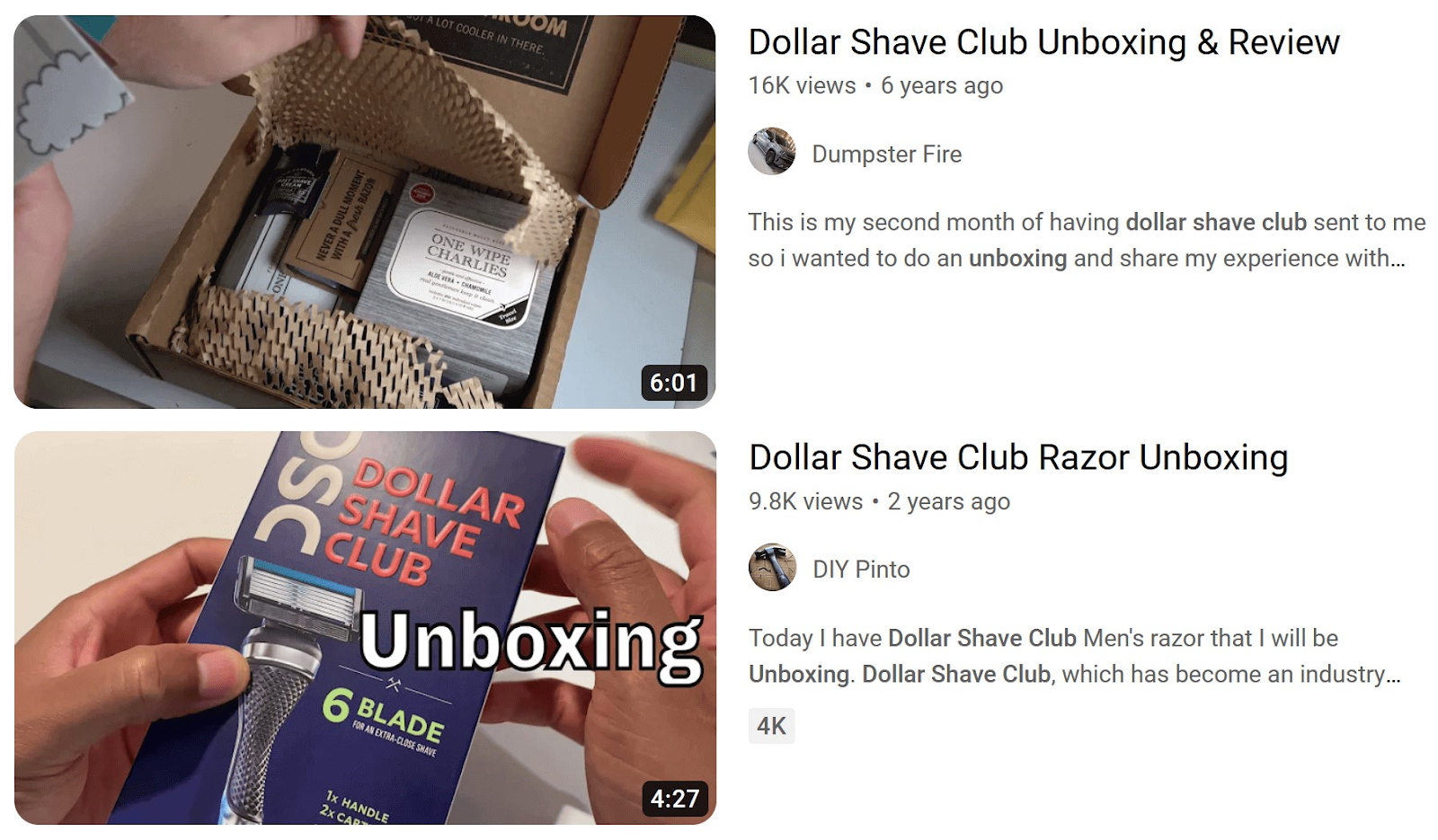
These videos, featuring real customers, showcased the excitement of unpacking and discovering the product. While highlighting its features.
14. PPC Campaigns
PPC (pay-per-click) campaigns are paid ads that drive traffic to your website or product page through search engines.
This lets you target, for example:
- Specific keywords
- Customer groups
- Locations
And it can increase your product’s visibility in relevant searches.
PPC campaigns are great for reaching a large audience in no time. They can generate leads very efficiently because of their targeted approach. And you also get analytics to track and optimize your advertising efforts for maximum effectiveness.
To see PPC ads, search on Google. Ads are displayed at the top of the results page:
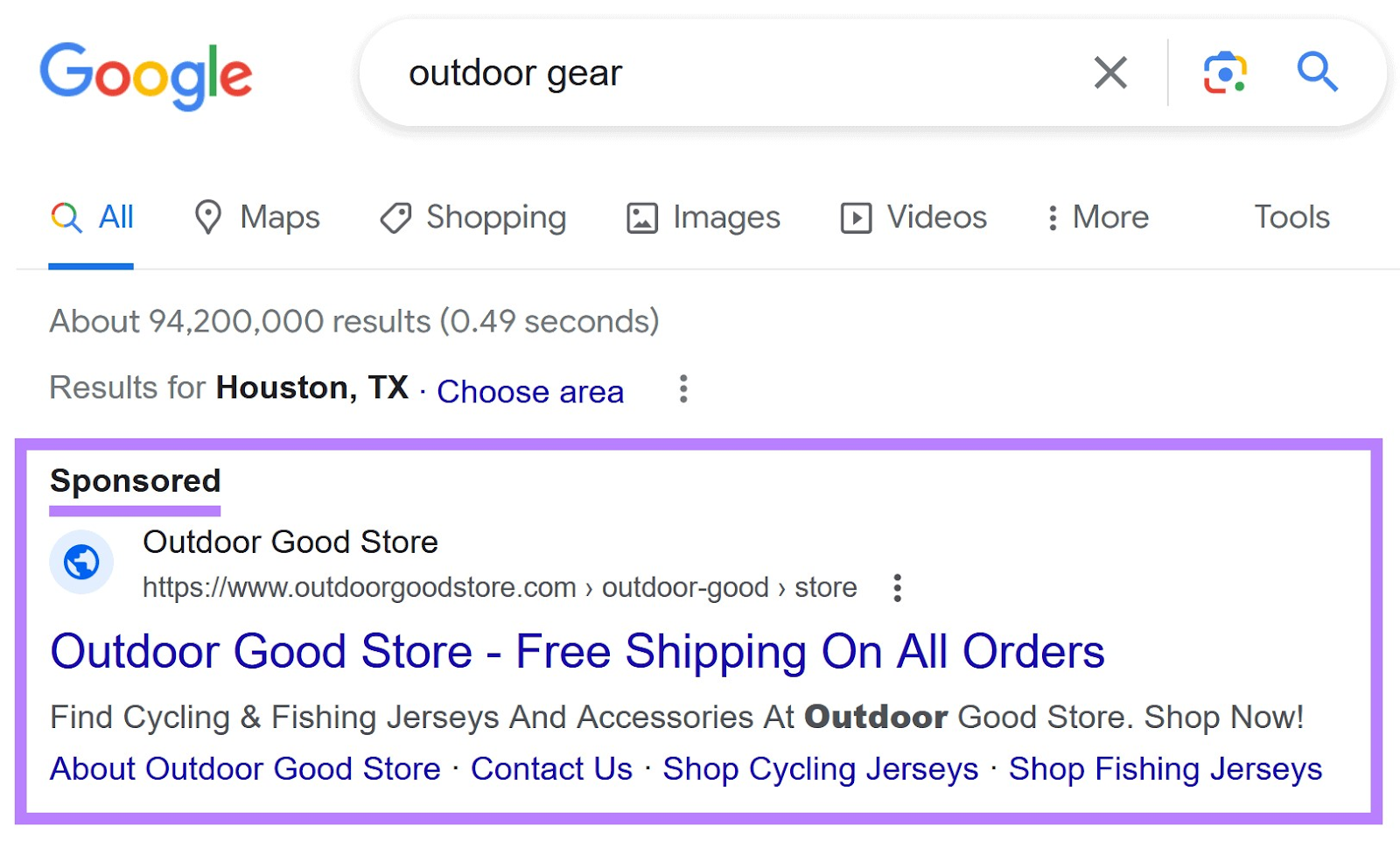
Tip: You can find other types of digital advertising in our comprehensive digital advertising guide.
Here are a few tips for launching a successful PPC campaign:
- Use keyword research tools to identify high-performing keywords
- Create compelling and relevant ad copy that clearly communicates the benefits of your product and sets it apart from competitors
- Run multiple campaigns to test different keywords, ad copy, and images
- Monitor and optimize campaigns regularly to ensure maximum efficiency
You can optimize your PPC campaigns with Semrush.
Let’s say you’re launching an outdoor gear product and looking to boost visibility through PPC marketing.
Start by identifying relevant keywords for your outdoor gear product.
Use the Keyword Magic Tool to generate a list of “outdoor gear” keywords:
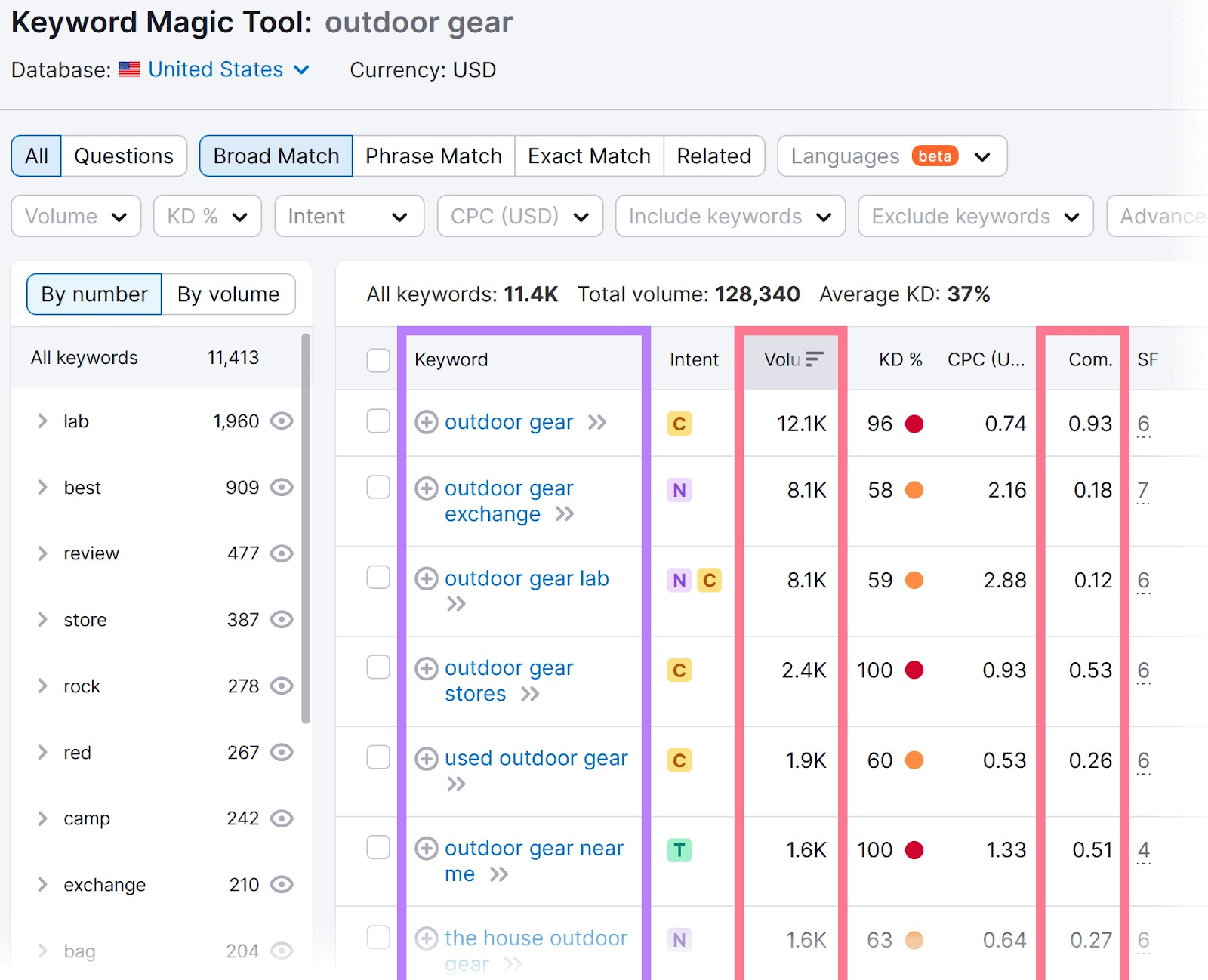
Filter and sort them based on search volume and competitive density.
Once you’ve got a solid list of relevant keywords, let’s dive into competitive intelligence.
By analyzing your competitors’ keywords, you can clearly understand what keywords are driving traffic to their products.
This combination of keyword research and competitor analysis provides a dual-strategy. It ensures your PPC campaigns are optimized with high-potential keywords. And gives you an edge in understanding the competition’s strategy. Thus helping you identify opportunities to outperform them.
To do that, enter the URL of your competitor into the Advertising Research tool and you’ll get a detailed report on the keywords they’re targeting in their PPC campaigns:
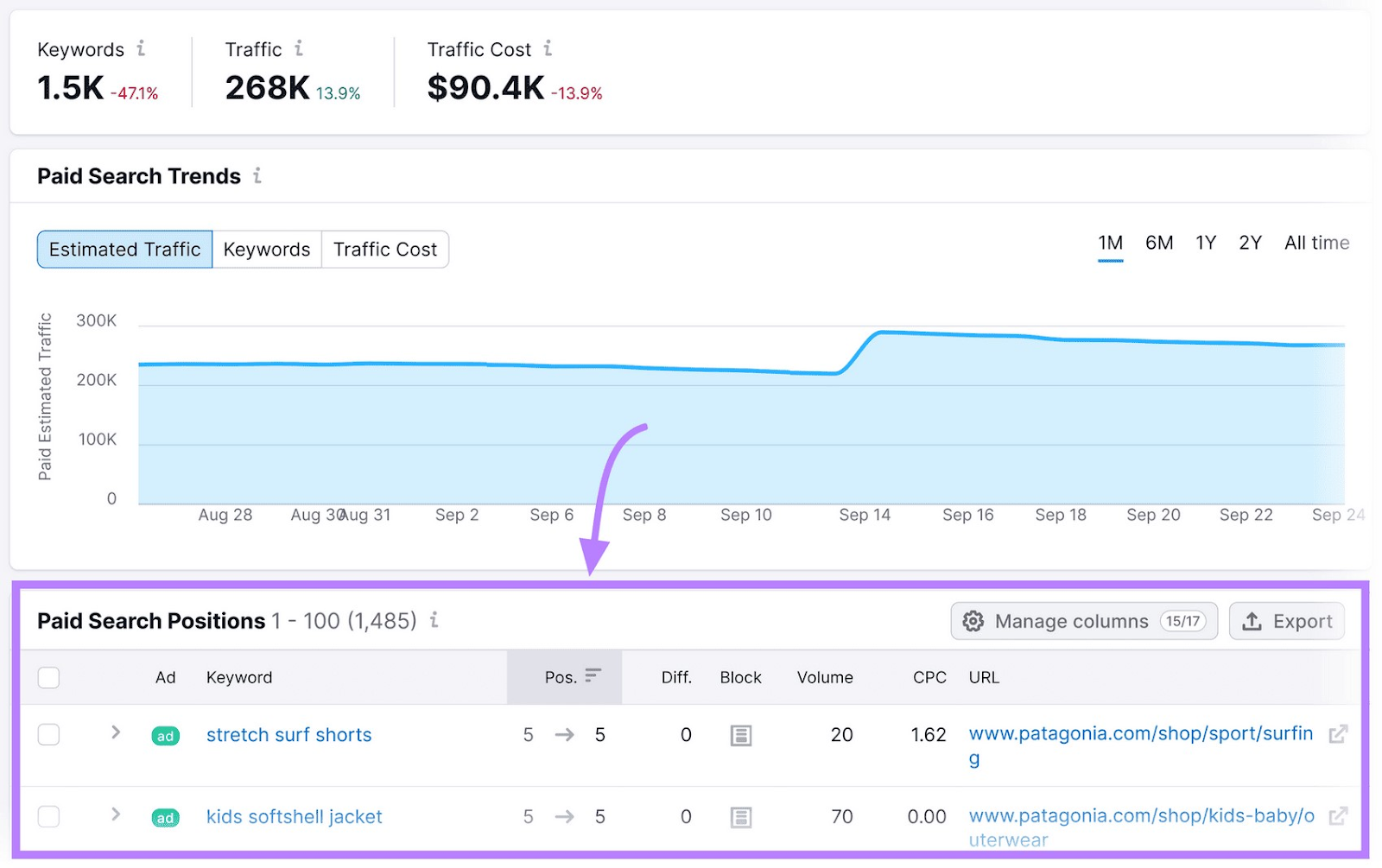
Combine your researched keywords and competitor’s keywords to create a comprehensive keyword list.
Then, use the PPC Keyword Tool to remove duplicates, clean up your list, and group keywords thematically for ad groups.
Example: Forbes Magazine’s PPC Campaigns
Forbes experienced a 20% increase in subscribers through their expertly managed PPC campaigns.

The campaign’s success hinged on targeting valuable keywords that resonate with Forbes’ audience.
The ad copy effectively communicated the magazine’s value, leading to increased user engagement.
And multiple campaigns were run. Testing different keywords and ad copy variations, continuously optimizing based on performance data.
15. Supporting Content
Supporting content is an integral part of a content marketing strategy. Enhancing and complementing your main content piece. It refers to the materials created around your core product, service, or key message to offer additional information and add value for your audience.
Supporting content can take various forms, including blog posts, social media posts, infographics, case studies, webinars, podcasts, and more. Depending on your target audience and their preferences.
Creating supporting content is beneficial for product launches as it helps:
- Educate potential customers about the product
- Engage people who might be interested in purchasing
- Provide valuable information that can help users make informed decisions
Here are a few tips for creating successful supporting content:
- Keep the content concise and clear
- Focus on answering customers’ questions
- Use visuals (e.g., videos, infographics, etc.) to make the content more engaging and appealing
You can check out the Topic Research tool to discover trending topics for your product.
Let’s say you have a health and wellness product.
In the search bar, enter a term related to your health and wellness product. This could be a broad category like “fitness” or “nutrition.” Or a more specific keyword like “vegan protein powder” or “yoga mats.”
The tool also lets you target a country, region (state), or city. So, if your product targets a specific location, enter this in the location field.
This filters the results to show trends in your chosen region.
Then, click “Get content ideas.”
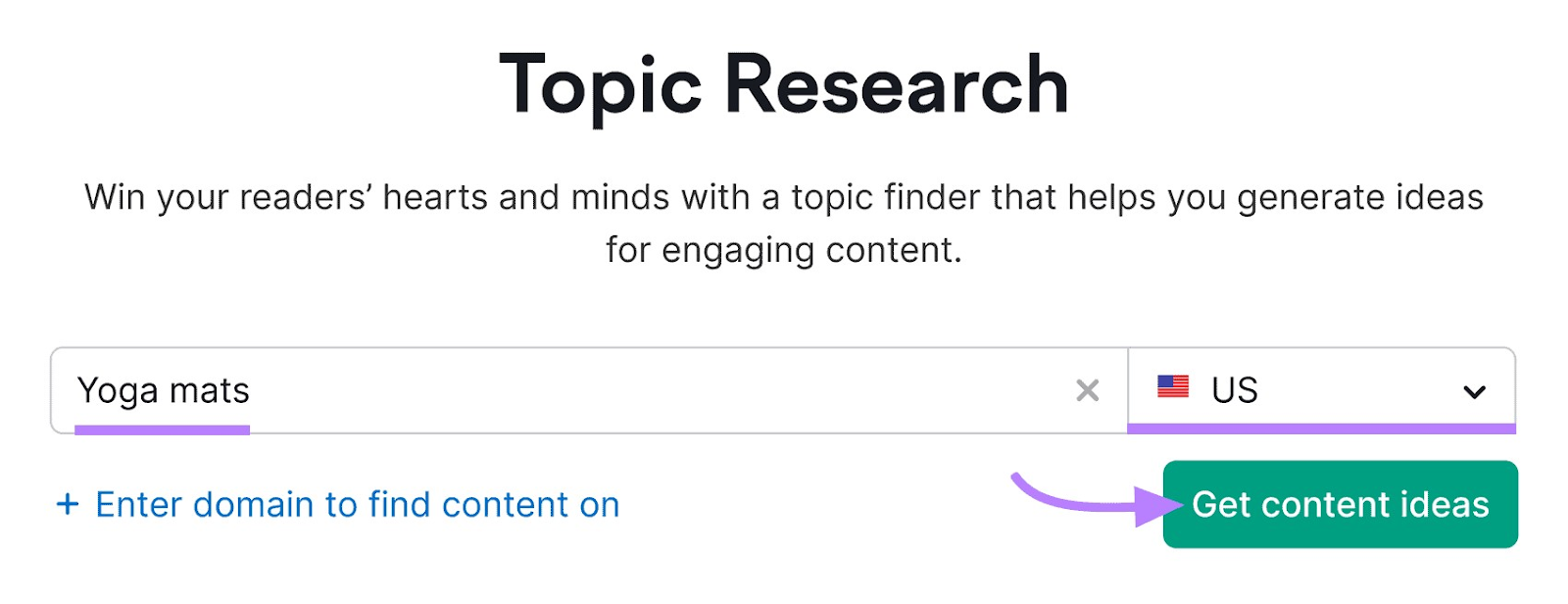
The tool will find relevant subtopics.
Click “Show more” on any idea to see headlines, questions, and related searches.
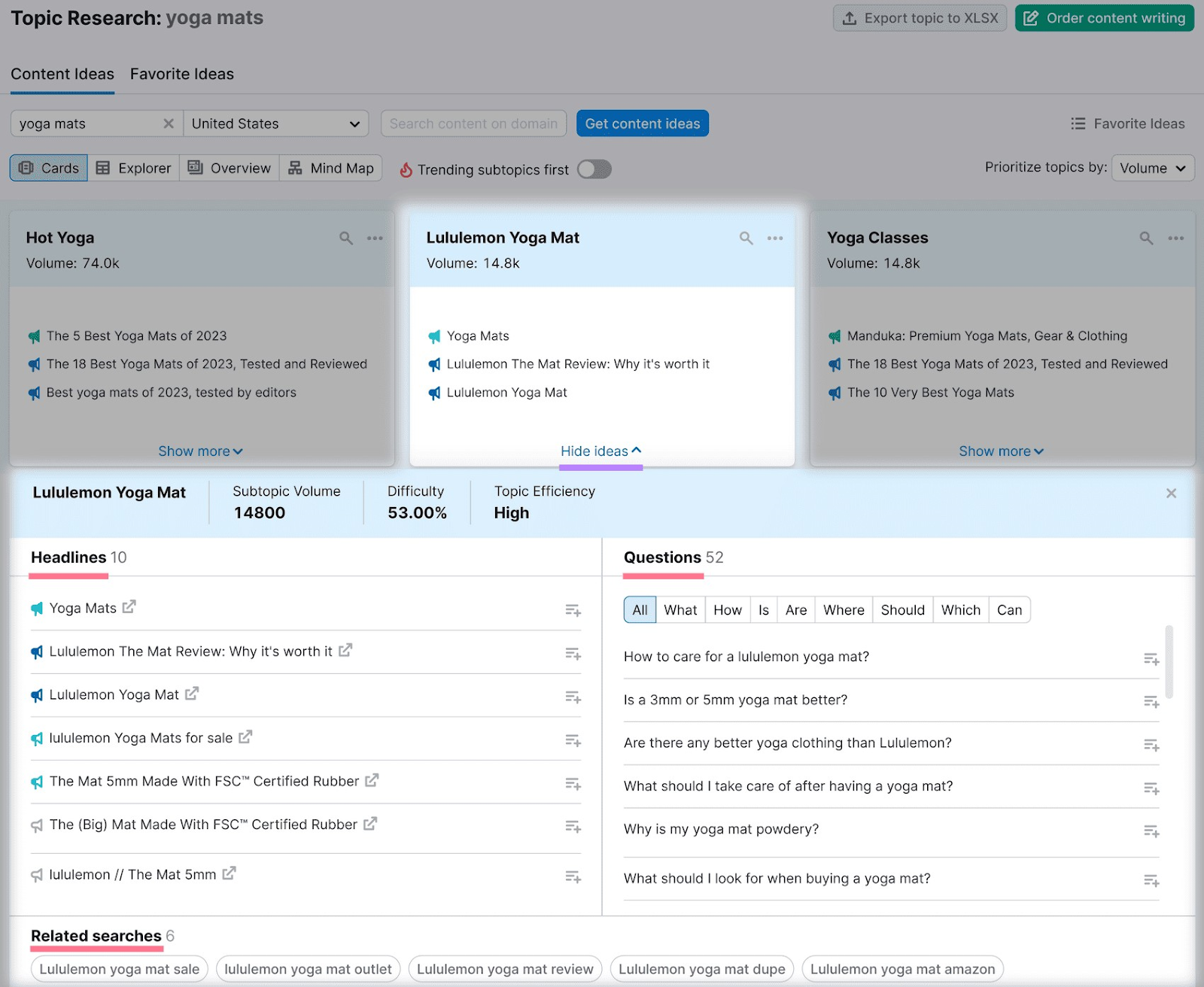
Subtopics with a flame icon are increasing in popularity over the last few months. Use the toggle to see “Trending subtopics first.”
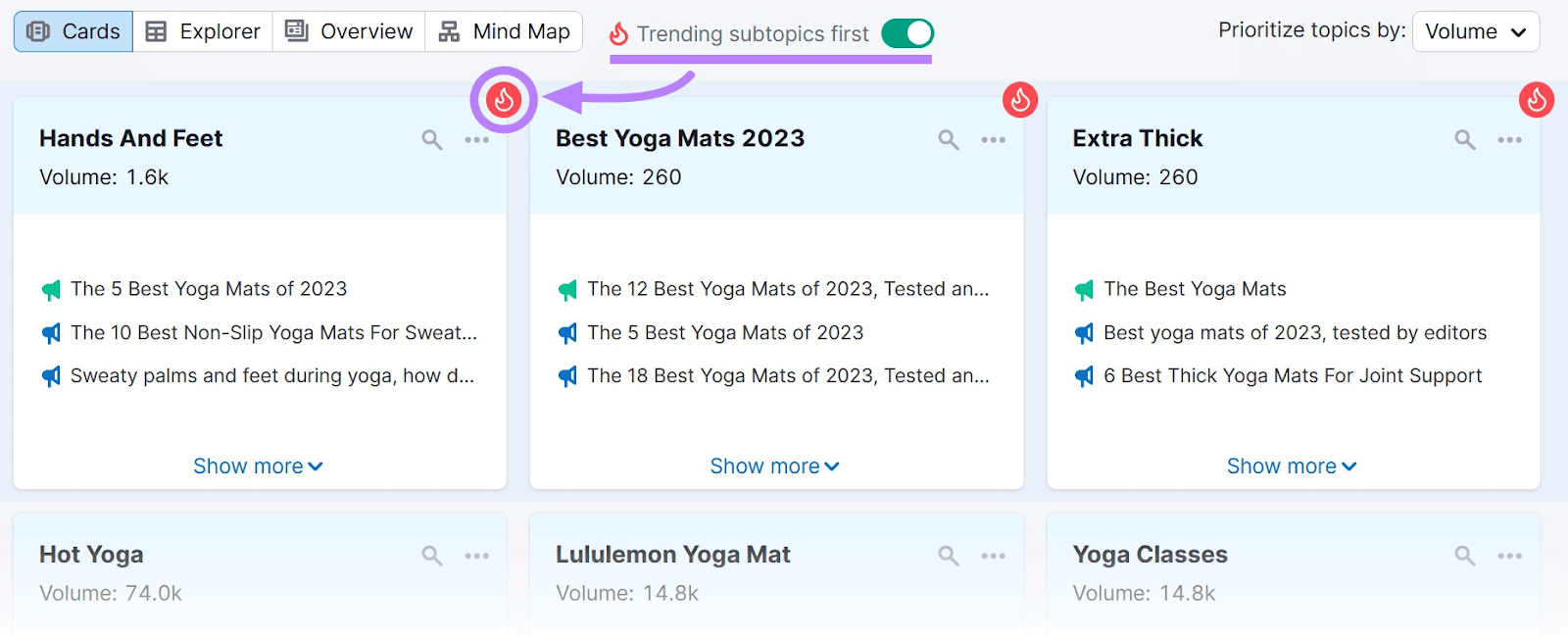
These represent the fastest growing searches related to your topic. Use these insights to inform your product launch strategy.
Example: Salesforce’s Supporting Content
Salesforce did a great job using supporting content to launch its AI-powered software, Einstein.
They put together a comprehensive drip campaign with blog posts, newsletters, and infographics. These resources helped educate potential customers about the benefits and features of Einstein. Showing them how AI can revolutionize their CRM experience.
Salesforce’s supporting content built excitement for the product and ensured a solid understanding before the launch. This played a big role in Einstein’s successful launch and widespread adoption.
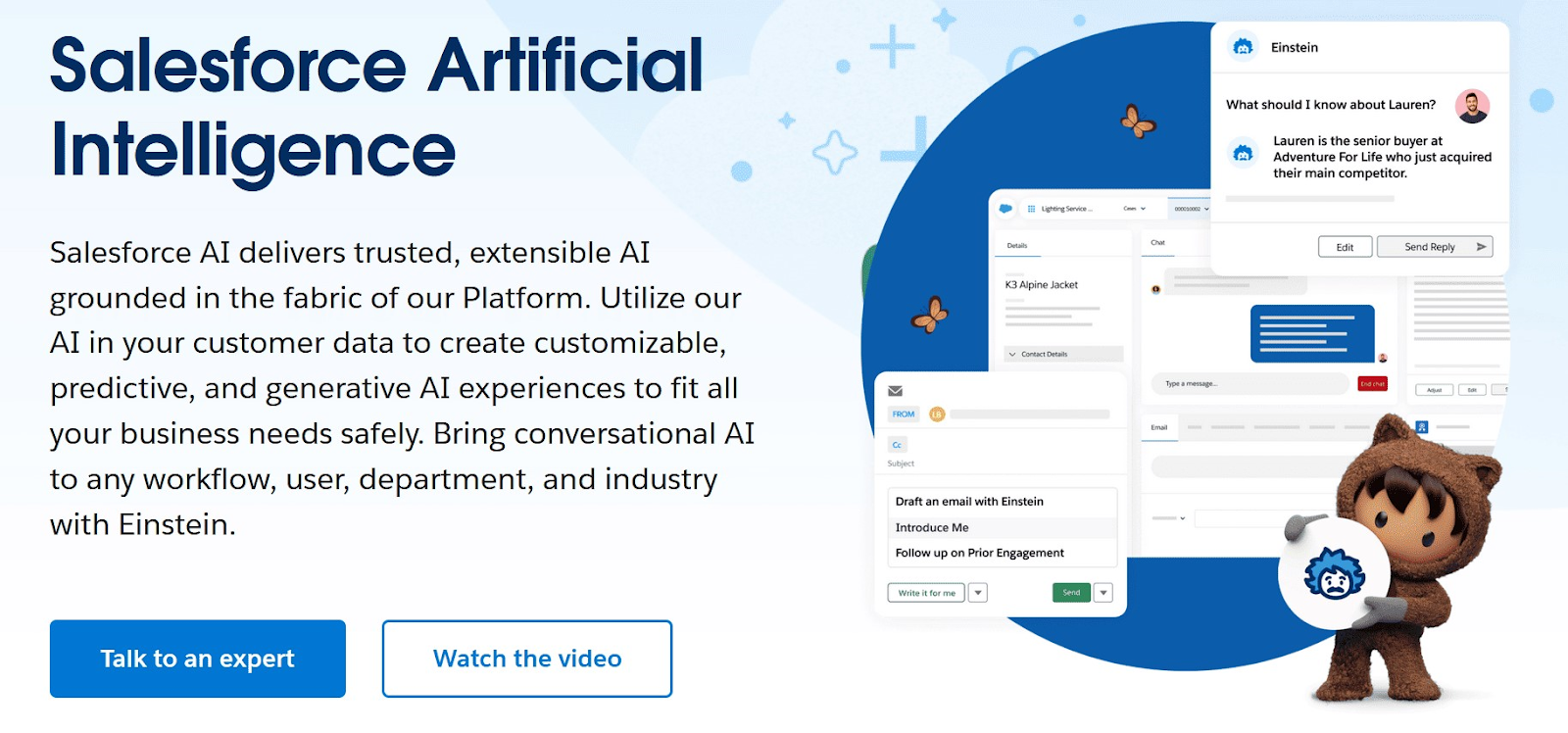
How to Implement Product Launch Ideas (Successfully)
Pre-Launch Activities
The primary goals of pre-launch activities are:
- Generate excitement, buzz, and anticipation around your product
- And build a solid foundation of understanding and desire among potential customers
Here’s how you can do this:
Conduct Market Research
Conduct thorough market research to understand your target audience’s needs and preferences. This will help you tailor your product and marketing strategy to meet your customers’ needs.
You can use surveys, focus groups, social listening tools, and competitor analysis to make it happen.
Let’s take the Market Explorer tool as an example.
Start by picking one of the three options:
- Create List: Make your own custom market using competitors’ domains
- Find Competitors: Let the tool gather and analyze a list of competitors for you
- Analyze Category: Take a deep dive into an entire industry
Let’s say you’re a running shoe company wanting to benchmark your growth against your competitors’.
Select “Create List” and enter your competitors’ domains in the field.
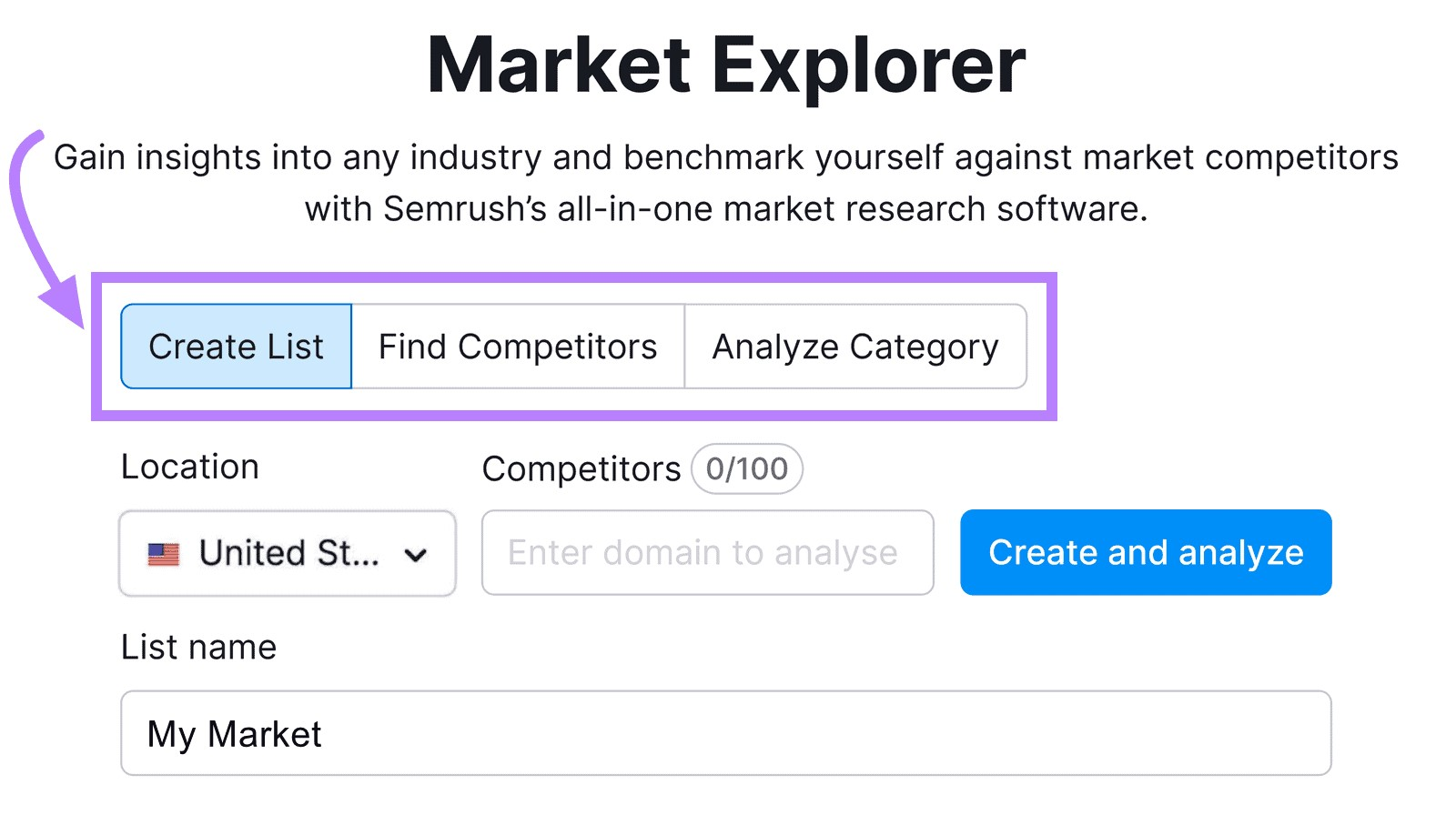
First, select the location and enter the competitors. Then, name the list and click “Create and analyze.”
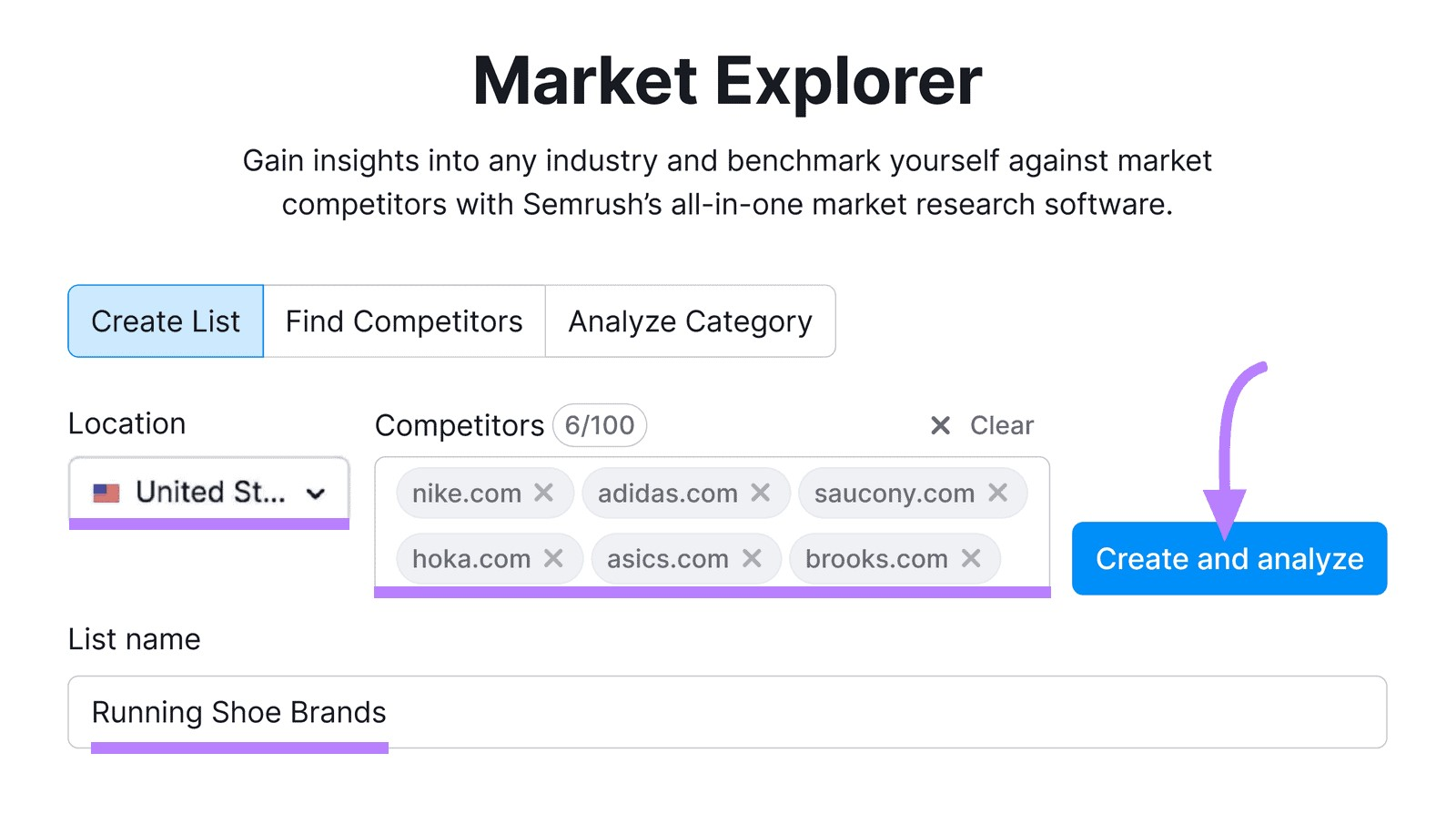
In the “Overview” report, refer to the “Market Summary” section.
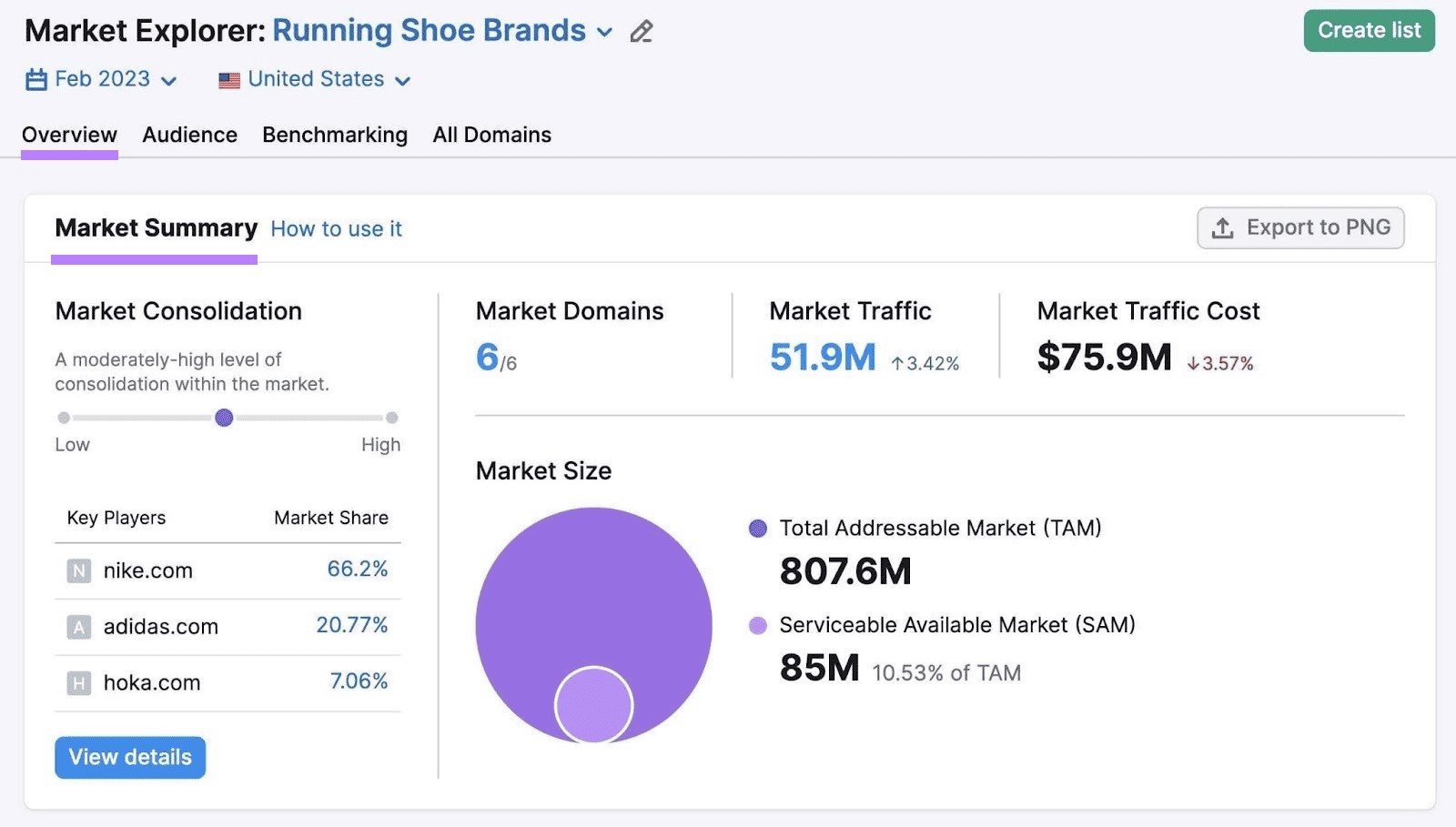
This section gives a market overview. Including consolidation level, key players and their market share, market size, and more.
Next, check out the “Growth Quadrant.”
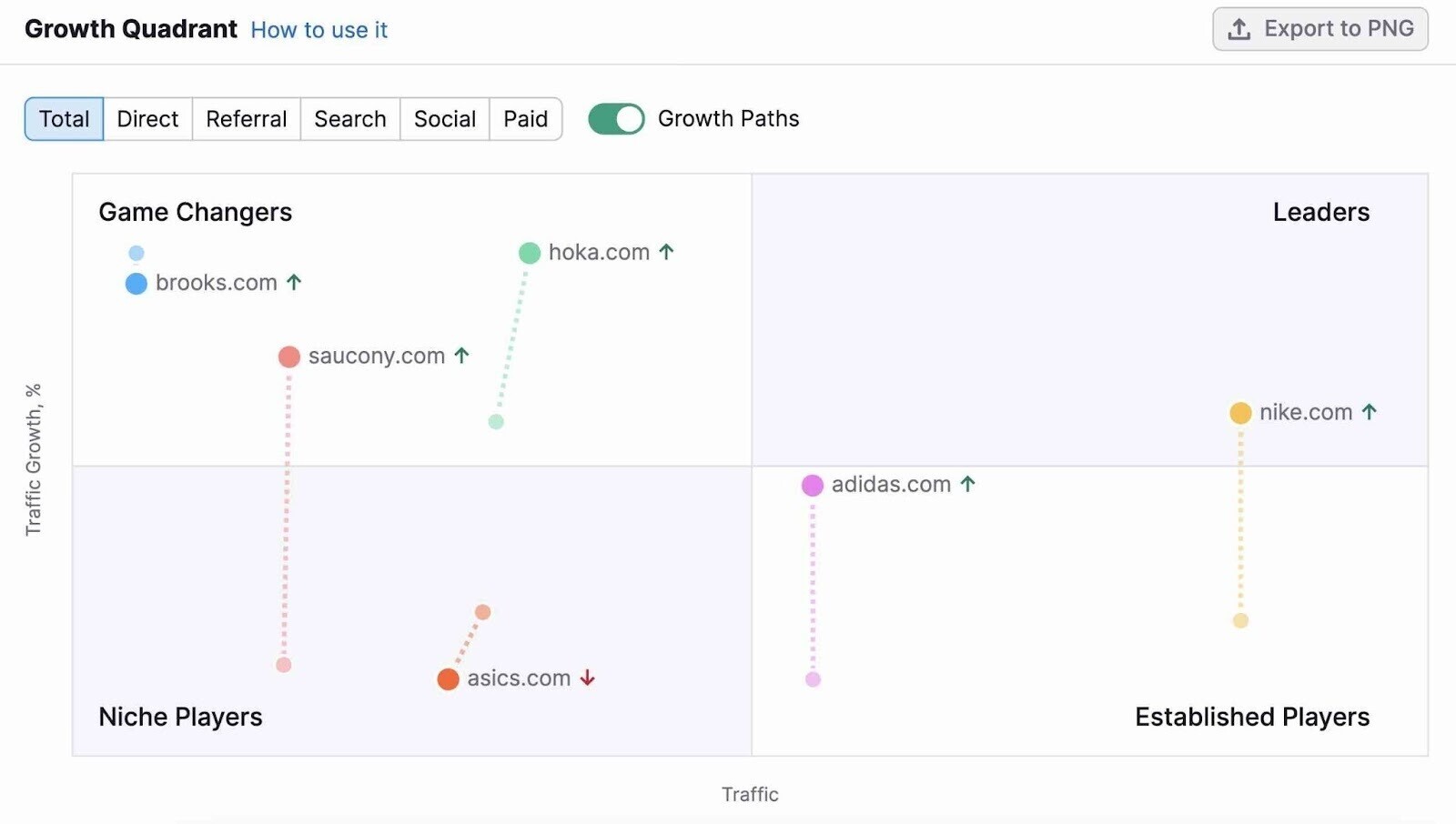
The Growth Quadrant contains four sections:
- Game Changers: Emerging websites with a high growth potential
- Leaders: Big, well-known companies whose website traffic is growing
- Niche Players: Companies with smaller presence
- Established Players: Stable, popular websites
This helps you understand how competitors are growing over time in relation to one another.
Test and Refine Your Product
Make sure your product is market-ready.
A thoroughly tested and optimized product can help avoid launch problems and negative customer feedback.
You can use beta testing, gather feedback from early users, and implement quality assurance processes.
Here are some tools to streamline the process:
- UserTesting helps you gather valuable insights from real users to improve your product’s usability
- BugSnag helps you monitor and track software errors to ensure a smooth user experience
- TestRail helps you manage and organize your testing efforts
Event Planning Strategies
The goal of event planning strategies during a product launch is:
- To create captivating and memorable experiences that facilitate meaningful interaction with the product
- Ignite interest and enthusiasm amongst potential customers
- And amplify overall product visibility
Here are ways to achieve this:
Choose the Right Launch Type
To effectively introduce your product to the market, it’s crucial to first decide on the most suitable type of launch.
Not every product or target audience responds equally well to the same type of launch. Tailoring your approach can lead to better engagement and results.
Here are some options you can explore:
- In-person events: You can organize a product launch event using platforms like Eventbrite or Meetup
- Virtual launches: You can use software like Zoom or Microsoft Teams to host a virtual product launch
- Webinars: Consider platforms like GoToWebinar or Webex for interactive, educational product presentations
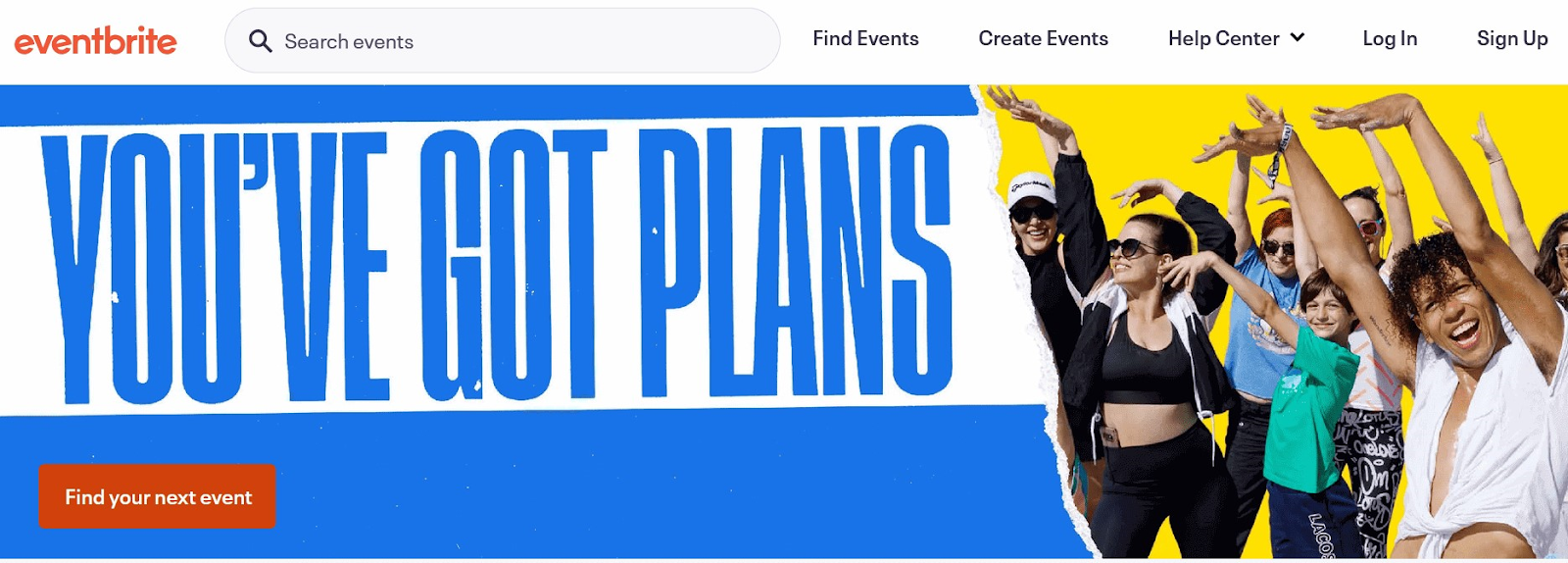
Promote Your Launch Event
Create awareness about your launch event.
The success of your launch event often depends on how many people know about it.
Just like when building anticipation, you can leverage influencer partnerships, email marketing, paid advertising, and social media promotions.
Feel free to check out these useful resources to maximize your event promotion:
Engage Your Audience During the Event
Keep your audience engaged during the launch event.
An engaged audience is more likely to remember your product and share their experience with others.
Wondering how to do that?
One option is using interactive presentations to engage your audience. Tools like Mentimeter and Slido can help you create interactive polls and quizzes.
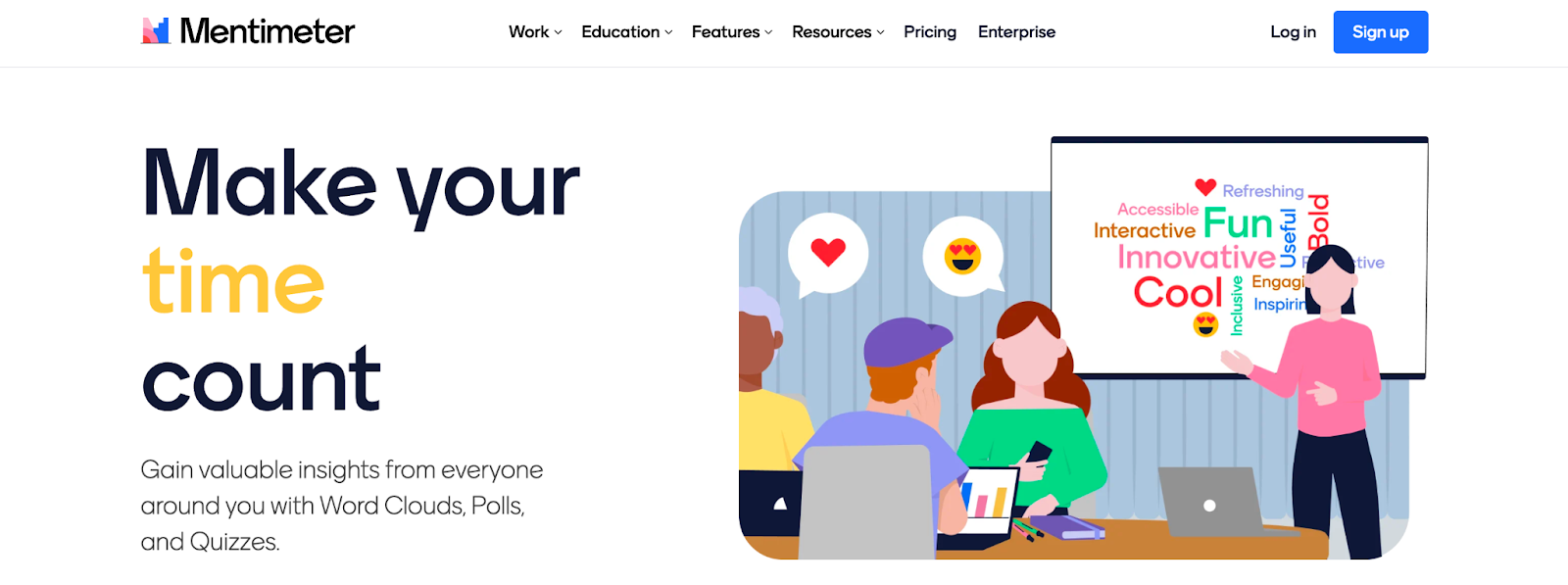
You can also choose to do live demonstrations, effectively showcasing your product’s unique features and benefits. Tools like OBS Studio or Streamlabs OBS can assist in live streaming and recording.
Post-Launch Strategies
The goal of post-launch strategies is to:
- Maintain the momentum garnered during the launch phase
- Optimize the product’s market positioning
- Drive interest and sales through customer engagement and feedback analysis
Here are some strategies you can adopt:
Gather and Respond to Feedback
Collect feedback from your customers after the launch.
This can help you understand what worked well and what needs improvement.
You can collect feedback through:
- Surveys (with platforms like Consumer Surveys)
- Customer review platforms (like Trustpilot or Google)
- Direct customer interactions
Keep the Momentum Going
Continue marketing efforts post-launch. This will maintain interest in your product and attract new customers.
For instance, you can use retargeting campaigns after your product launch. Retargeting campaigns are marketing efforts to engage individuals who have interacted with your brand. Bringing them back to convert into customers.
This helps remind potential customers about your product and encourages them to complete the purchase. Platforms like Google Ads and Facebook Ads Manager offer retargeting options.
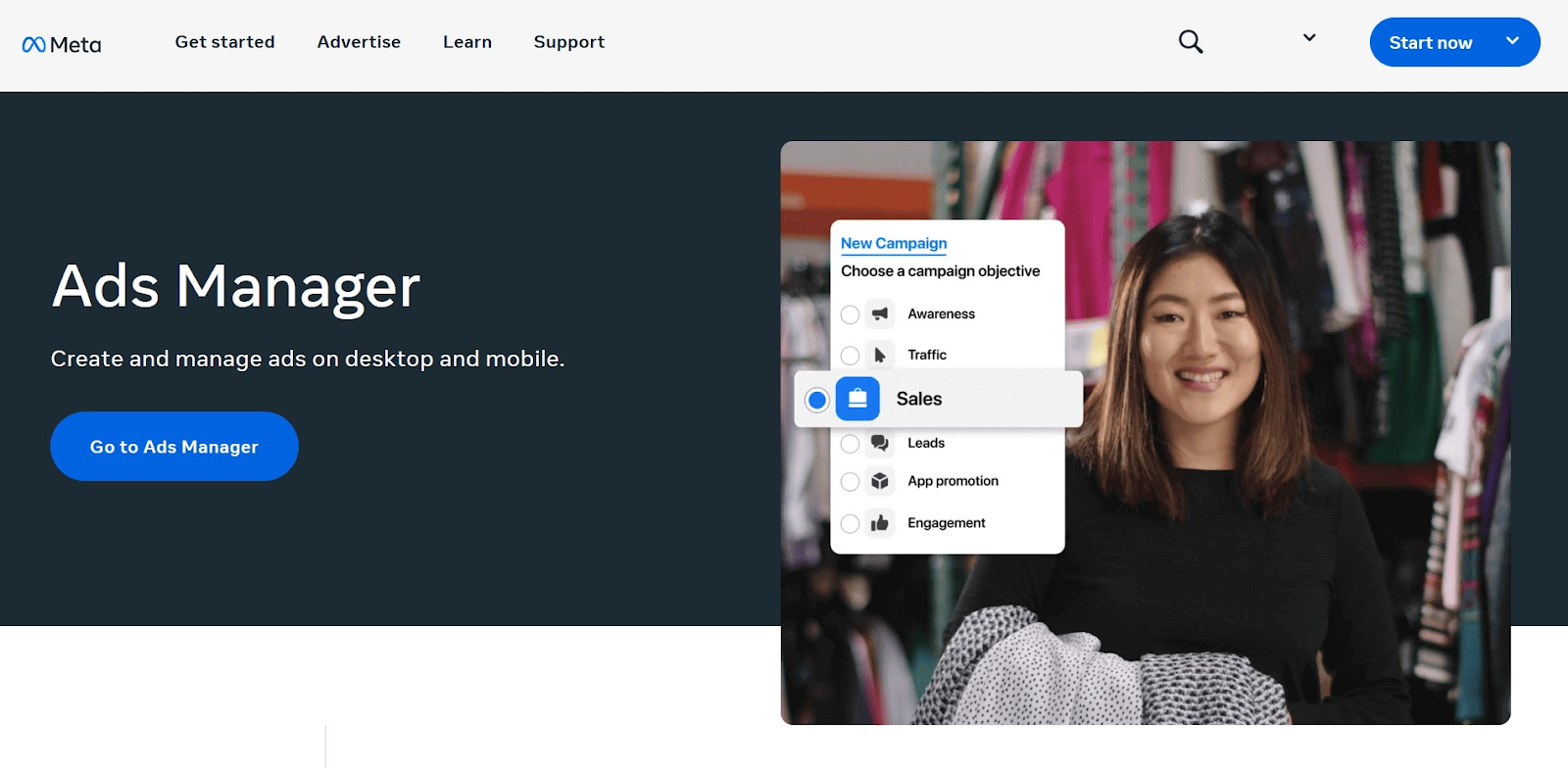
Fostering a product community can also maintain interest and attract new customers. Engage with customers on social media, create a user forum, or organize virtual events. Slack and Discord are great for building online communities.
How to Measure the Impact of Product Launch Ideas
Understanding how your target market responds to your product is crucial.
It provides insights into customer expectations, market fit, and the effectiveness of your marketing strategies.
A successful product launch reveals the tactics that drove interest and conversions. Informing future development and decision-making.
Here are some metrics and tools to measure the impact of your strategies:
4 Product Launch Key Performance Metrics
Website Traffic
Keep an eye on website visitors before and after launching your product. Dive into the traffic to specific sections and from different sources.
You can use UTM parameters to measure the success of different marketing campaigns. These are simple codes you can attach to a custom URL to track a source, medium, and campaign name. This enables Google Analytics to tell you exactly where users came from and what campaign directed them to you.
Conversion Rate
Measure the percentage of visitors who take desired actions on your site. Like buying or signing up for a newsletter. A higher conversion rate shows that your product and marketing connect with customers.
Bounce Rate
Check the percentage of visitors who leave your site after viewing a single page or not completing a certain action. A high bounce rate could show user difficulty in finding what they need. This may be due to messaging or design problems.
Sales
Track sales after the launch to gain valuable insights into the impact of your product launch. By attributing profits to specific campaigns, you can identify the most successful ones and invest more in those campaign types in the future. This data-driven approach allows for more effective allocation of resources and maximizes your return on investment.
4 Tools to Track Metrics and Analyze Product Launch Performance
Social Media Analytics
Native social media analytics tools can provide insights into audience engagement, reach, and conversion rates. This enables a comprehensive understanding of the product’s impact and reception.
For example, through Meta Business Suite’s Insights, you can measure page performance and user engagement.
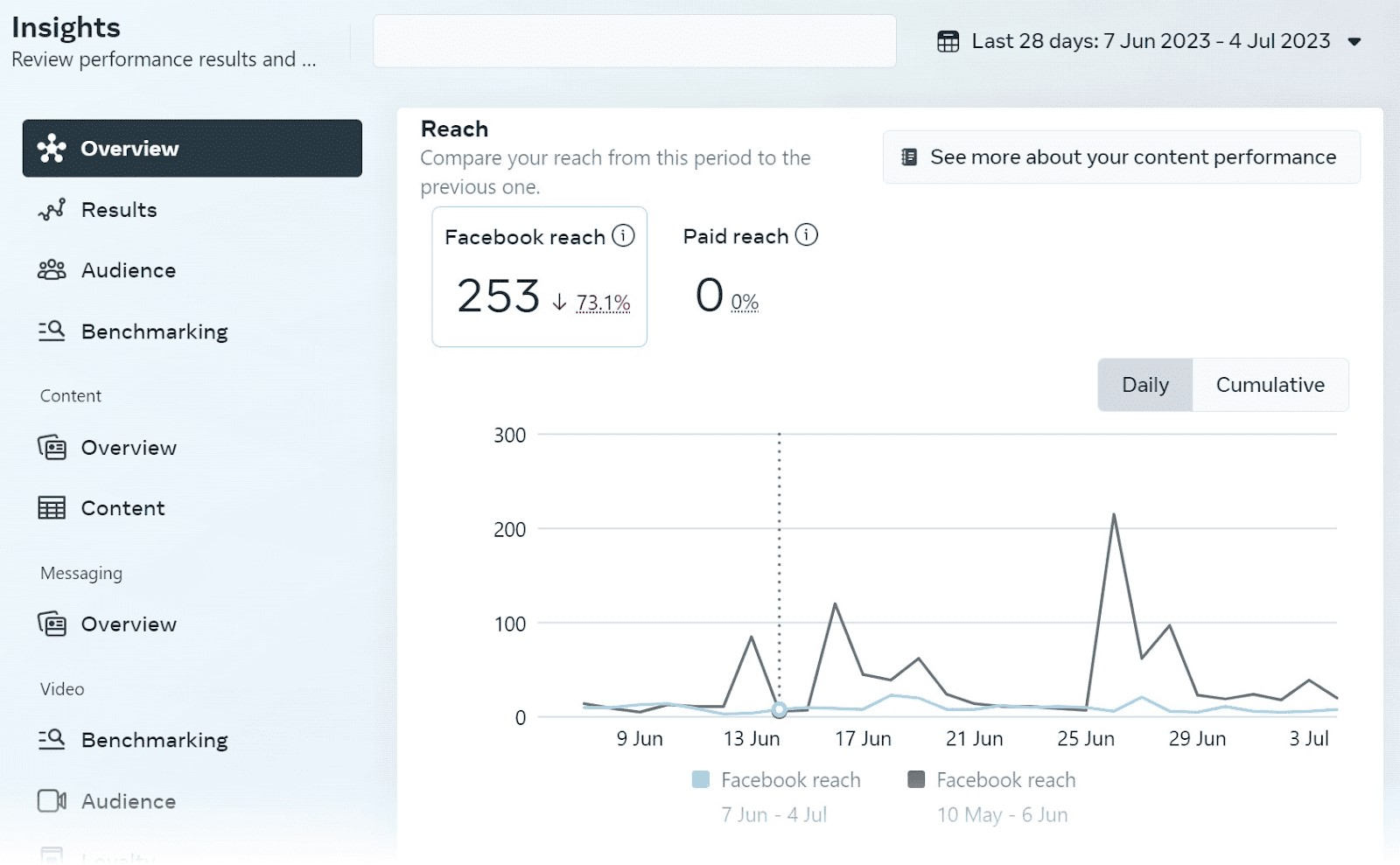
Further reading: 18 Social Media KPIs (and How to Track Them)
Heatmaps
Heatmaps (like those provided by Hotjar or Crazy Egg), visually represent user interactions on your website. They help identify high-engagement areas and areas for improvement in user experience and conversion rates after launch.
For example, heatmaps can show you the most clicked links or the most interacted-with elements on a page.
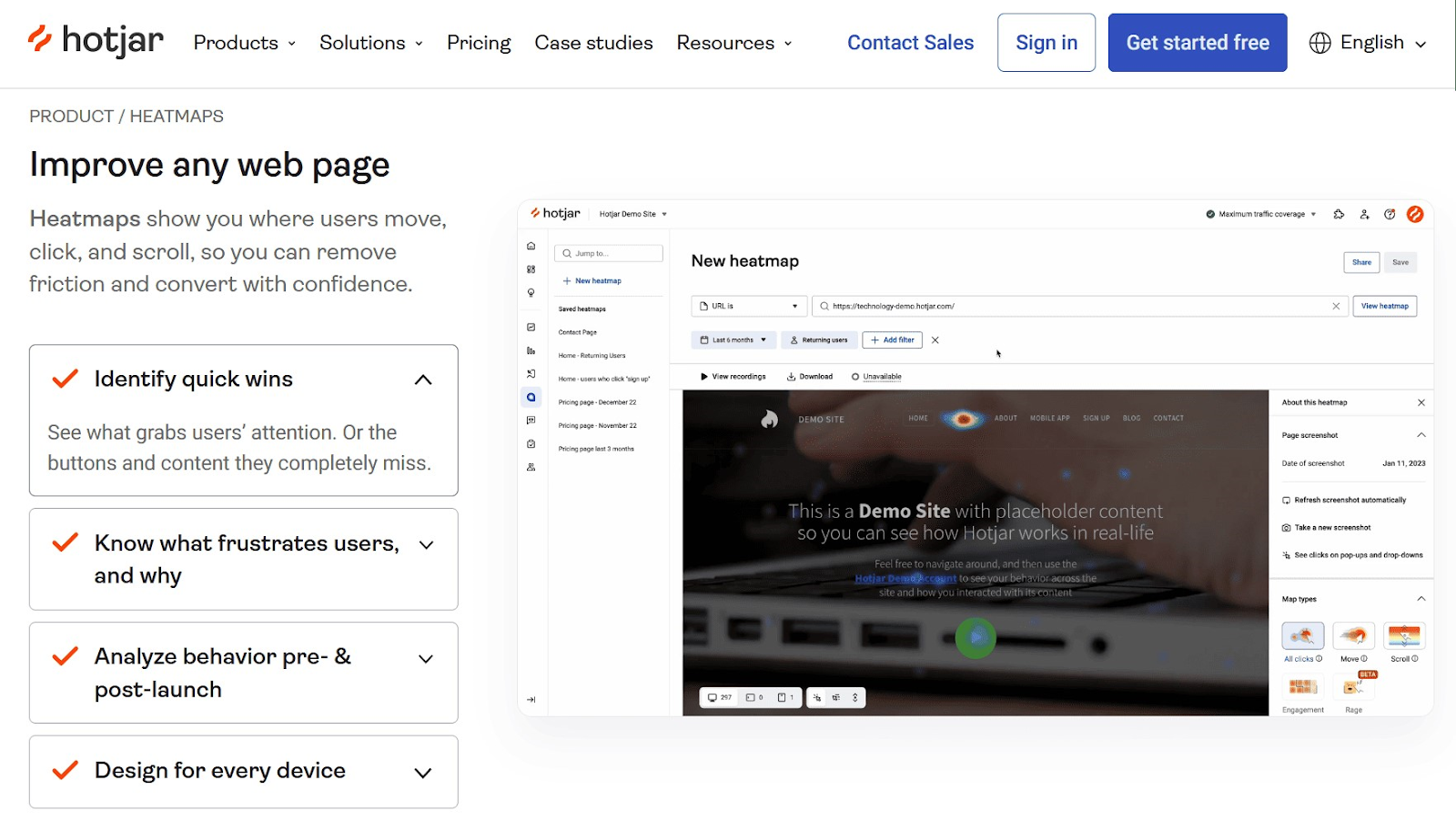
Google Analytics
Google Analytics offers insights into your website’s traffic. Including visitor count, referral sources, conversions, and bounce rate.
For example, you can monitor traffic to specific pages related to your product launch.
Tip: Check out our beginner’s guide to Google Analytics. Learn the basics and easily install it on your site.
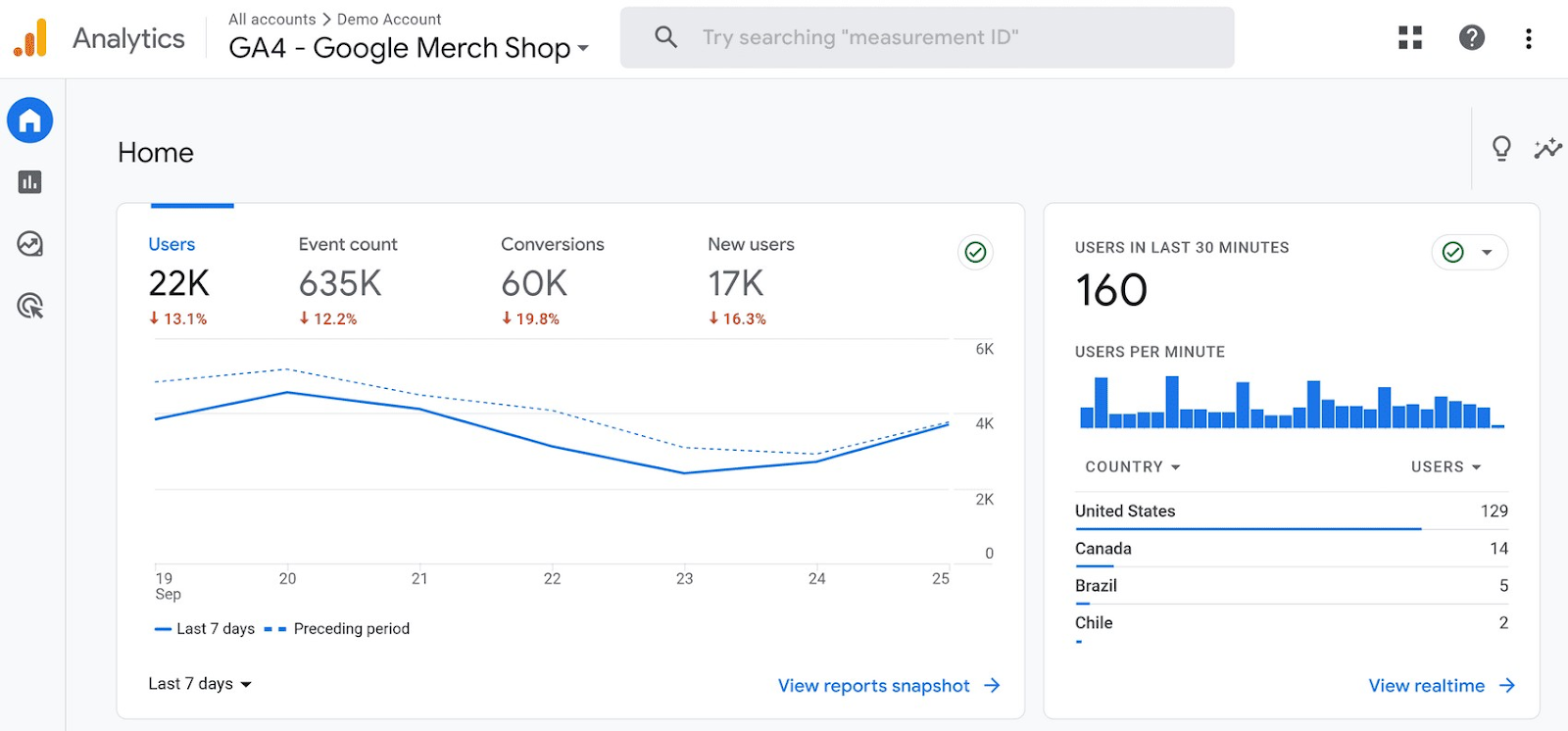
Position Tracking Tool
Semrush’s Position Tracking tool helps track your product’s rankings for targeted keywords on Google. Gaining valuable insights into your market positioning in search engines post-launch.
For example, you can see which keywords you are ranking for, how your rank has changed since the launch, and how competitors are performing. This helps you measure the success of your product launch efforts and inform future decisions.
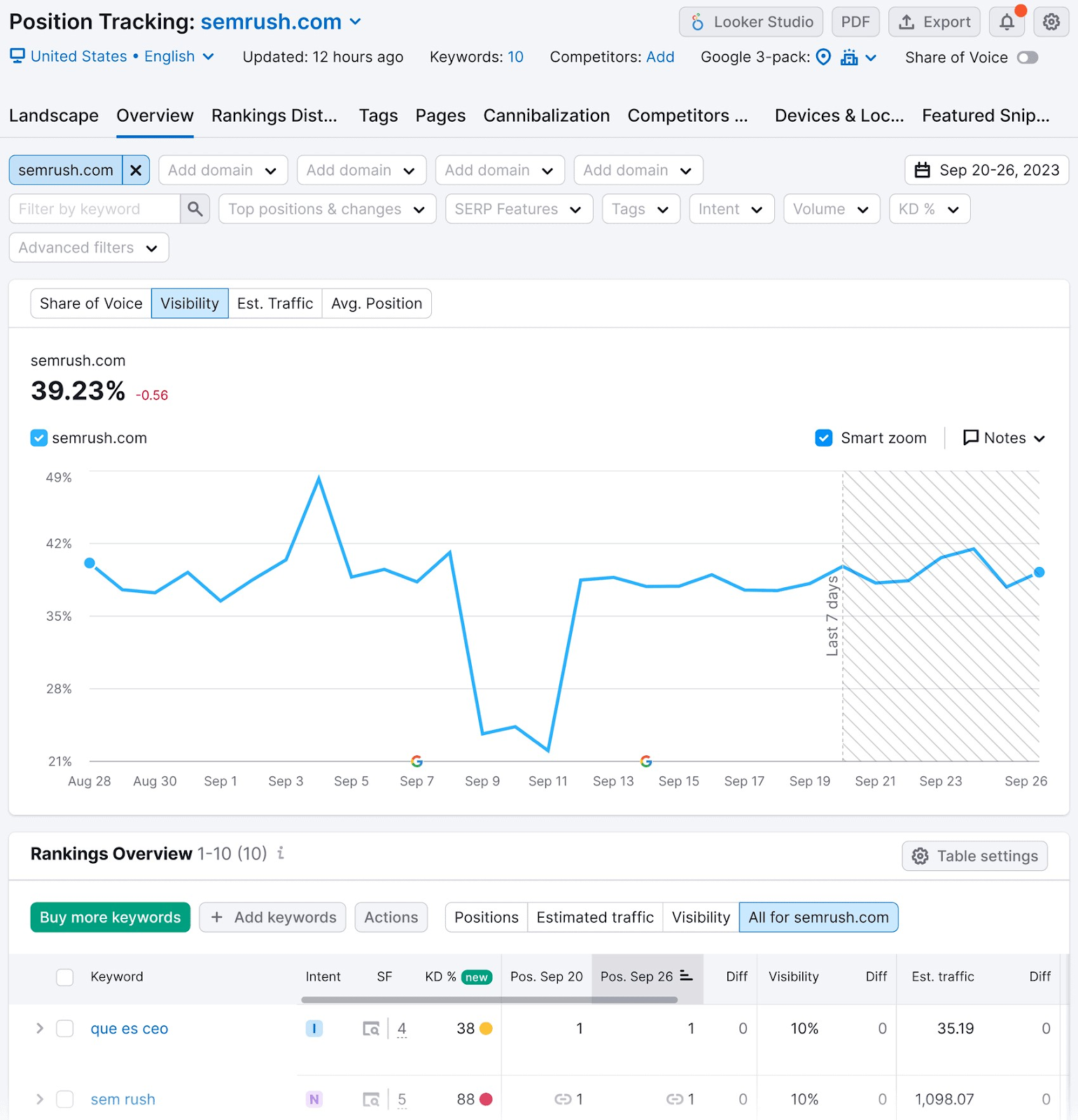
To truly revolutionize your product launch strategy, you must be innovative, dynamic, and data-driven.
Remember: the success of a launch doesn’t end at the event itself.
Consistent engagement with your audience, data analysis, and refining your approach based on feedback are vital for ongoing success.
From the initial announcement through to post-launch, your strategy should be an evolving narrative that keeps your audience captivated, engaged, and loyal.
Source link : Semrush.com
